View from the side showcasing the DOT housed inside the dome (Credit: Ashish Devaraj and Nitin Rawat).
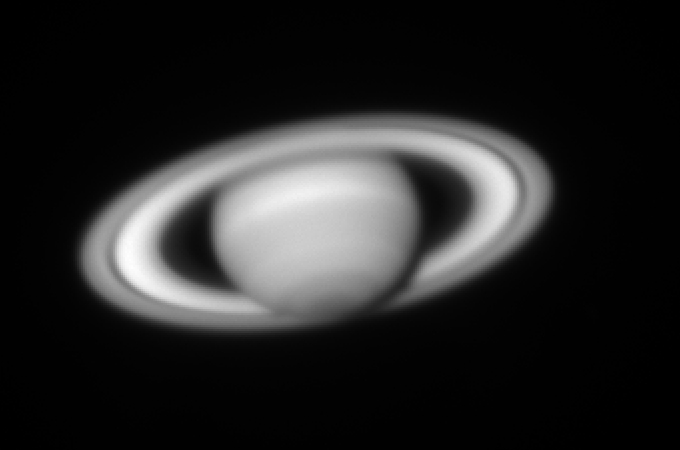
DOT captured its first light image of the planet Saturn on 25 March 2015
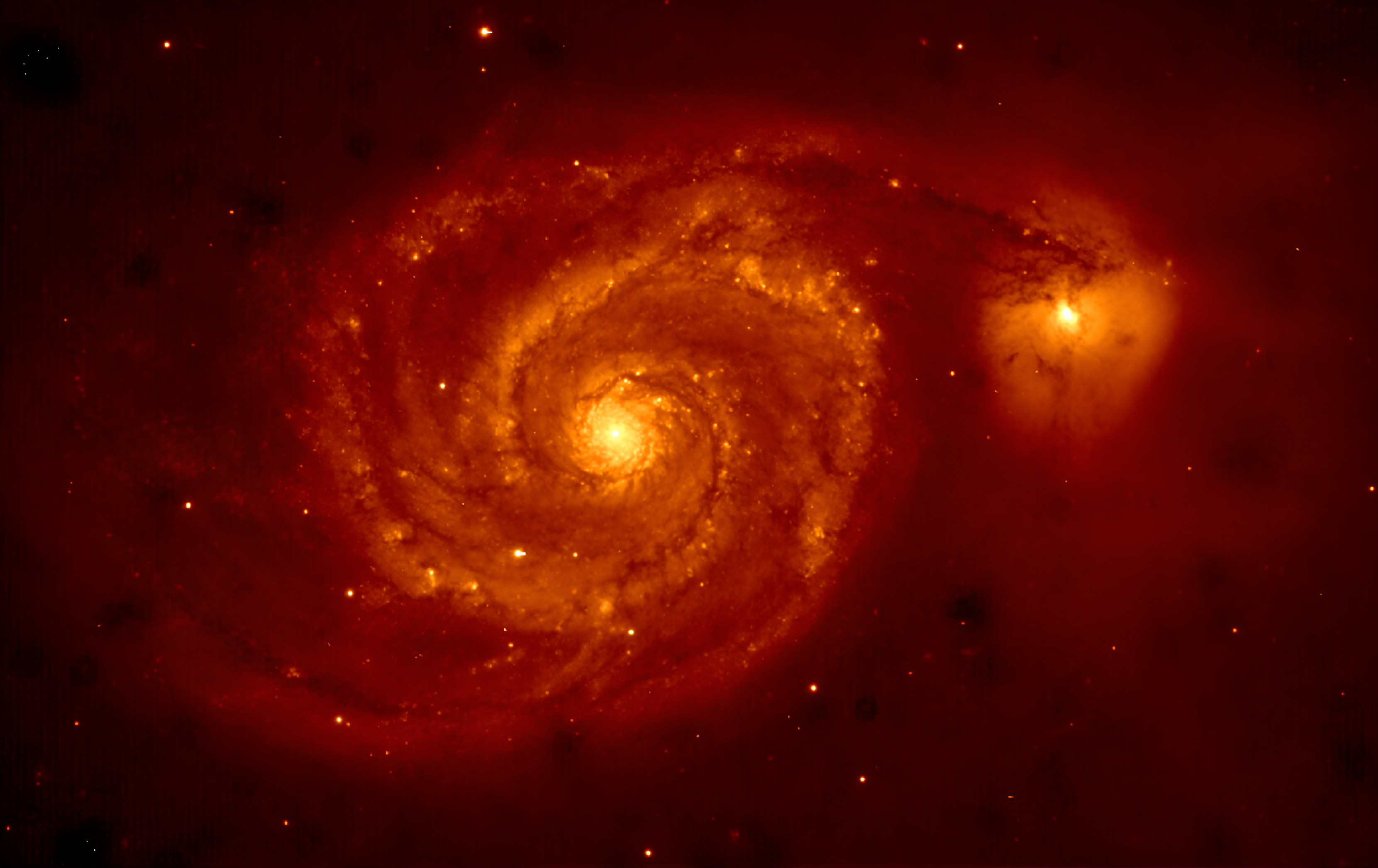
M51a, commonly known as the Whirlpool Galaxy, is a spiral galaxy featuring an active galactic nucleus. It is currently interacting with a companion dwarf galaxy M51b. The galaxy system, located approximately 25 million light-years away, was captured using ADFOSC mounted on the axial port of the 3.6m DOT.
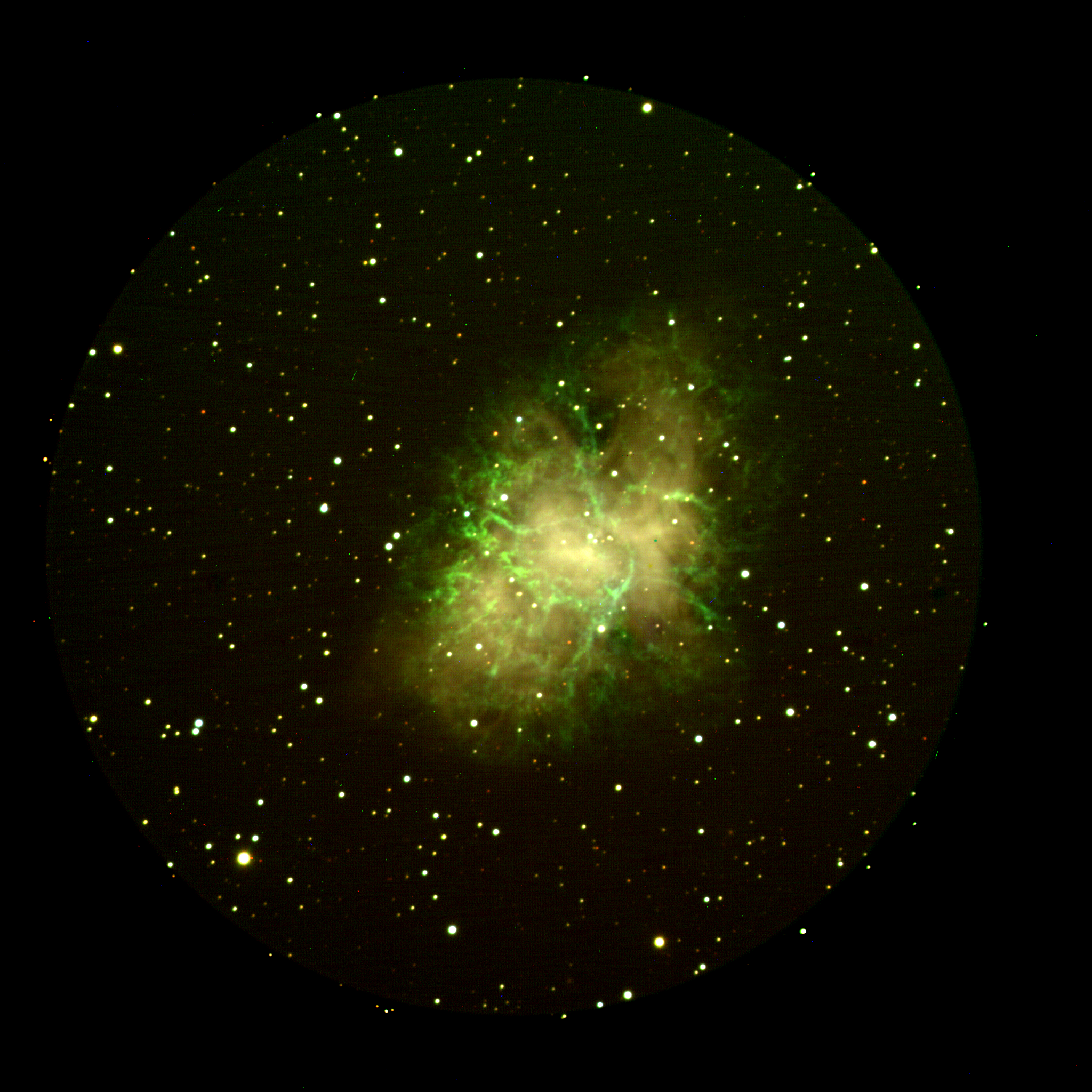
Messier 1 (Crab Nebula) is a supernova remnant and pulsar wind nebula located approximately 2 kpc from Earth. This image was captured using ADFOSC mounted at the axial port of 3.6m DOT, with a field of veiw of 13.6 X 13.6 arcmin (Credit: Geeta Rangwal, Nitin Rawat).
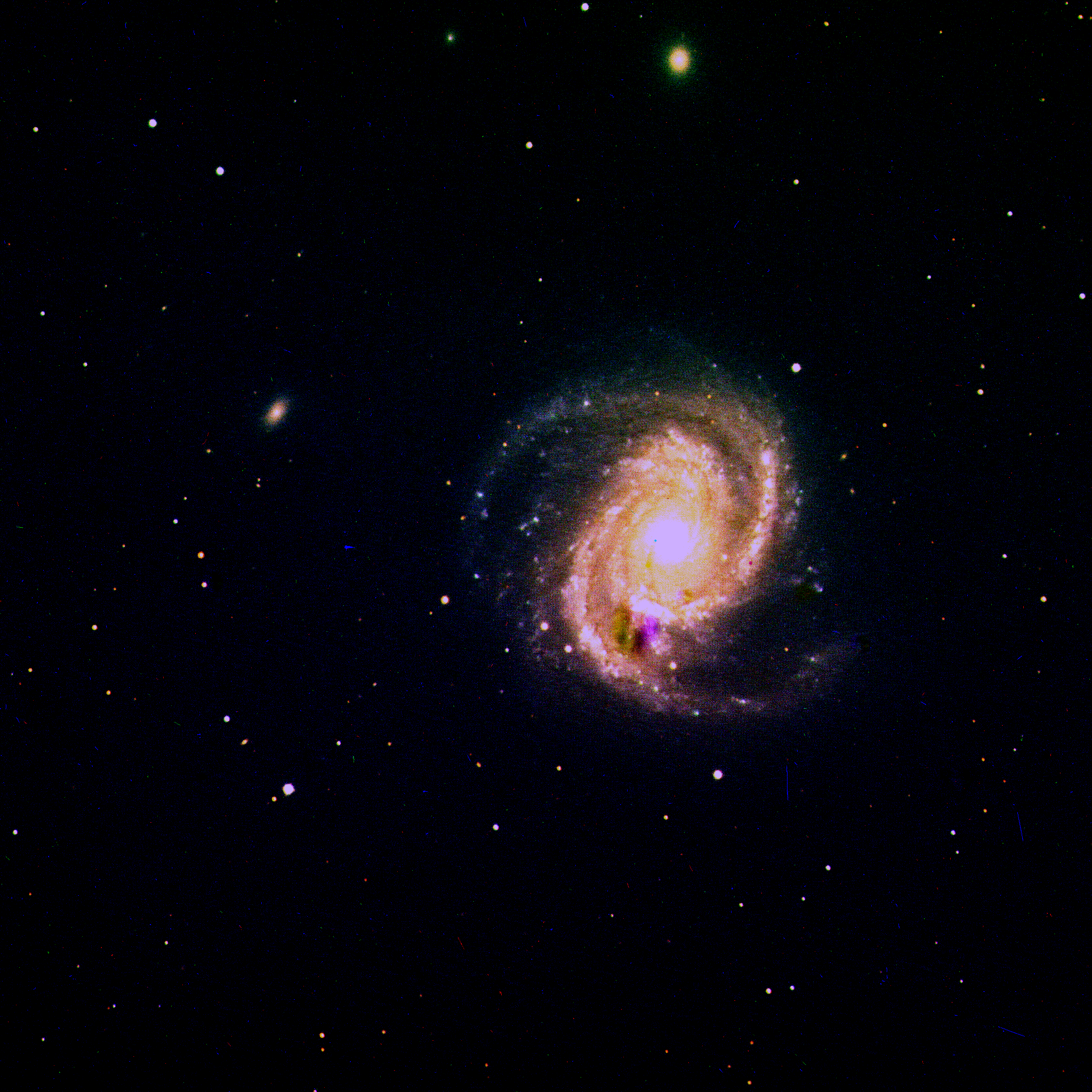
Messier 100 (Mirror Galaxy) is a spiral galaxy located approximately 55 Mly from the Earth. This image was captured using ADFOSC mounted at the axial port of 3.6m DOT, with a field of veiw of 13.6 X 13.6 arcmin (Credit: Geeta Rangwal, Ashish Devaraj).
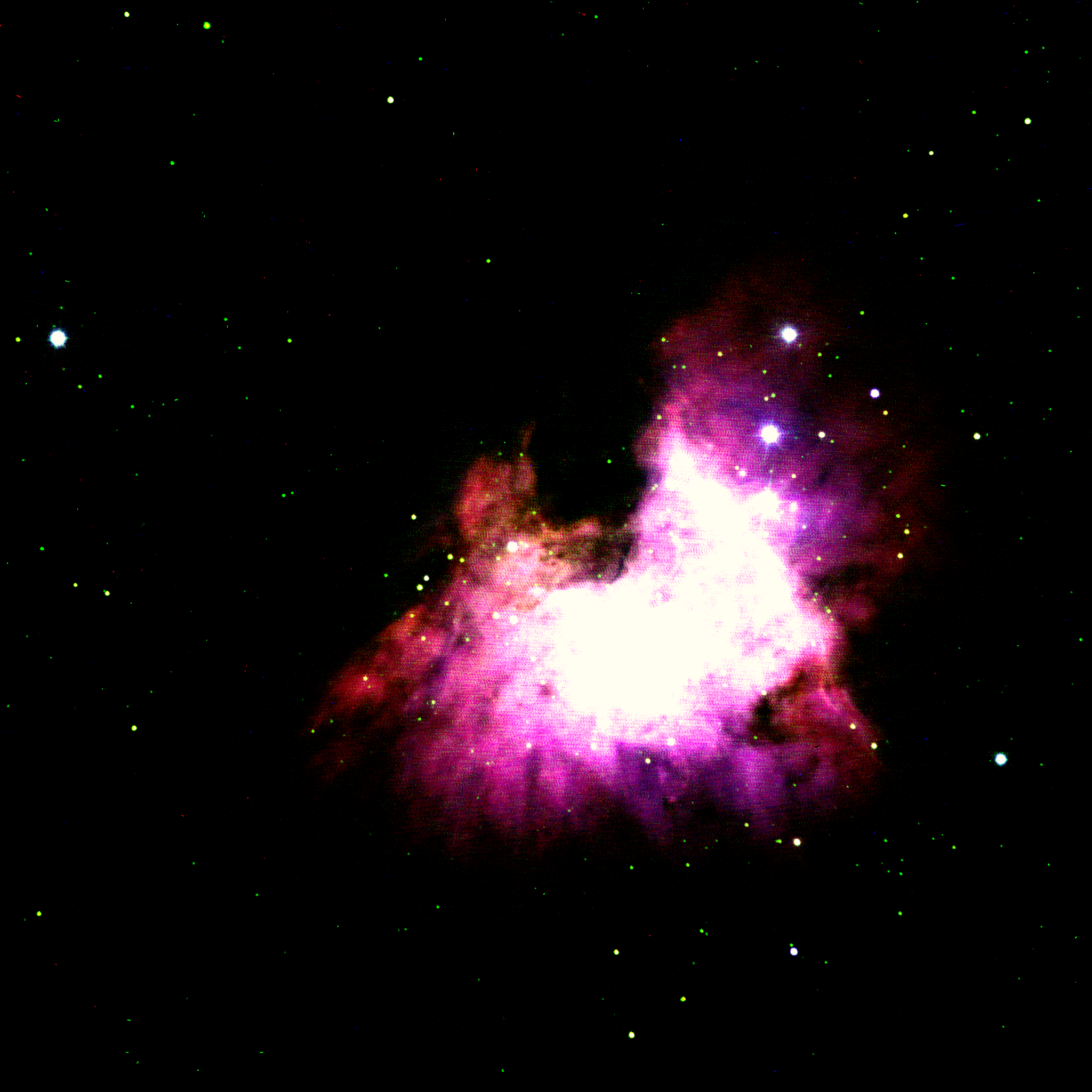
Messier 42 (Orion Nebula) is a very bright, diffuse nebula in the Milky Way located south of the Orion Belt in the constellation of Orion. This nebula is the closest region of massive star formation, located approximately 412 pc from Earth. This image was captured using ADFOSC mounted at the axial port of 3.6m DOT, with a field of veiw of 13.6 X 13.6 arcmin (Credit: Geeta Rangwal, Nitin Rawat).
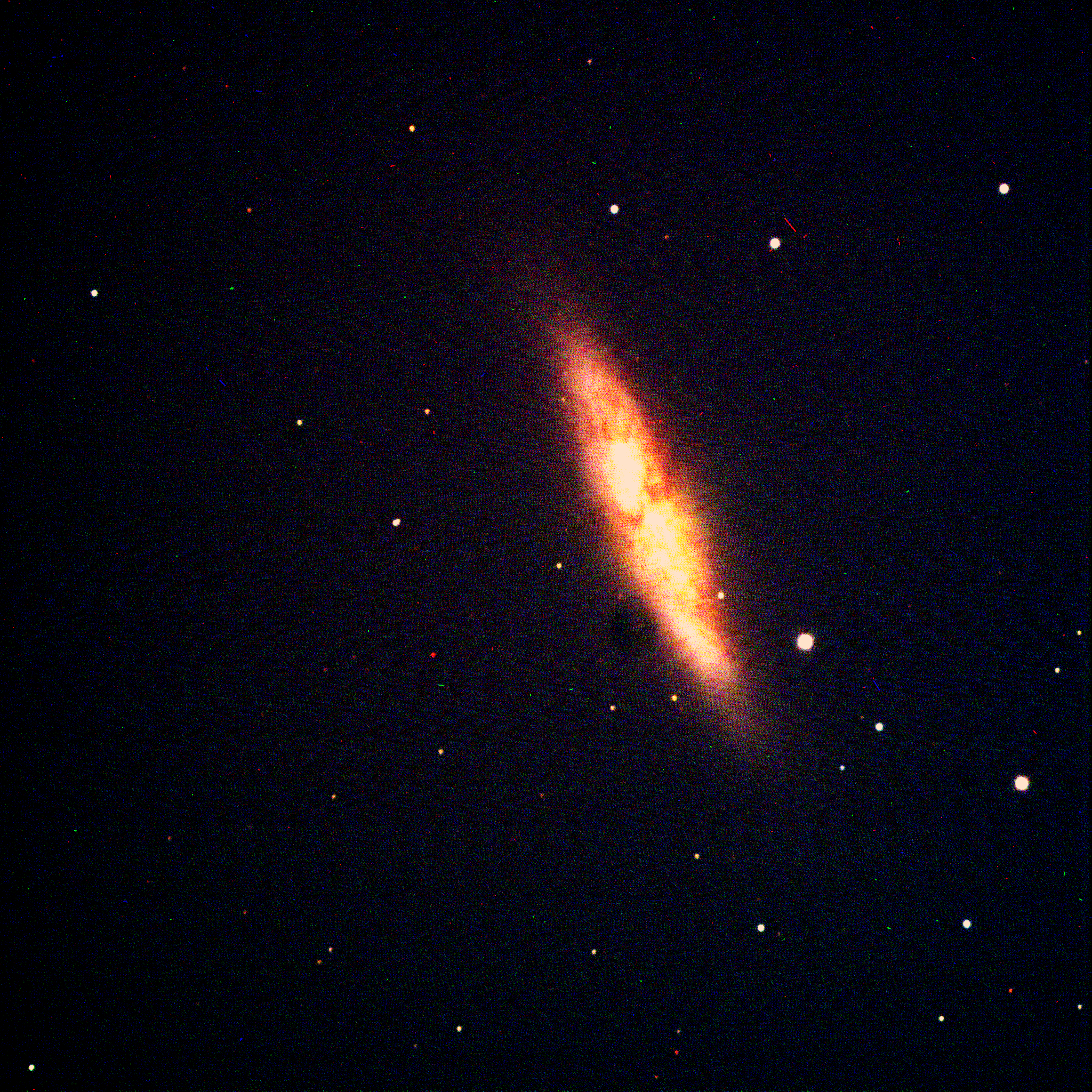
Messier 82 (cigar galaxy) is a starburst galaxy loacted approximately 3.7 Mpc from the Earth. The starburst activity have been triggered by interaction with neighboring galaxy M81. This image was captured using ADFOSC mounted at the axial port of 3.6m DOT, with a field of veiw of 13.6 X 13.6 arcmin (Credit: Geeta Rangwal, Jeewan Rawat).
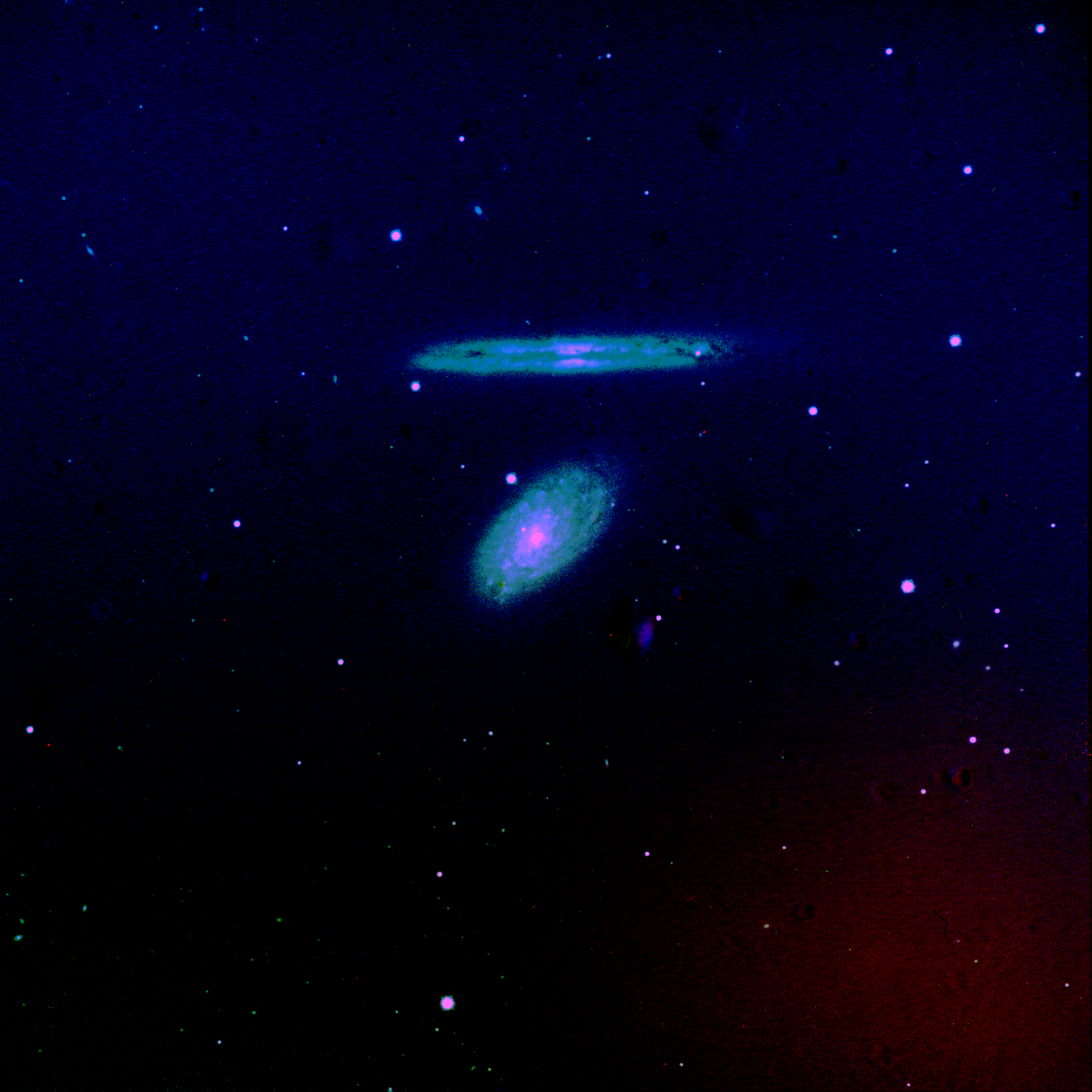
NGC 4302 (top) and NGC 4298 (bottom) form an interacting spiral galaxy pair separated by a distance of 11 kpc. A tidal bridge between these two galaxies was detected, which is thought to be a result of the tidal interaction between these two galaxies. This image was captured using ADFOSC mounted at the axial port of 3.6m DOT, with a field of veiw of 13.6 X 13.6 arcmin (Credit: Geeta Rangwal, Ashish Devaraj).
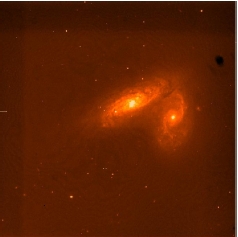
The twin galaxies NGC 4567 and NGC 4568, collectively known as the Butterfly Galaxies, were captured using IMAGER mounted on the axial port of the 3.6m DOT. These unbarred spiral galaxies, located approximately 60 million light-years away, are currently in the process of colliding and merging. It is predicted that within 500 million years, they will fully coalesce to form a single elliptical galaxy.
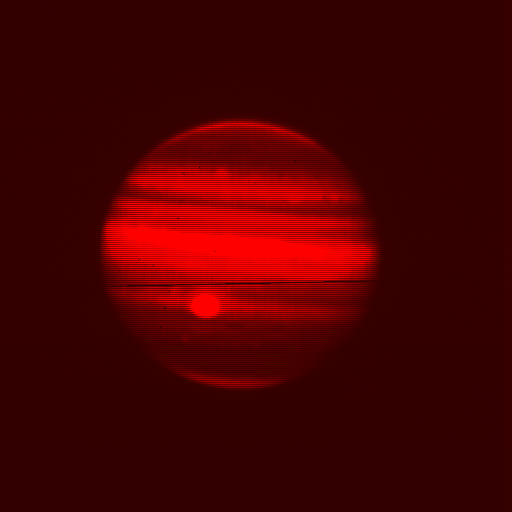
The Jupitor is imaged using TIRCAM II mounted on the side port of 3.6m DOT in Ks filter.
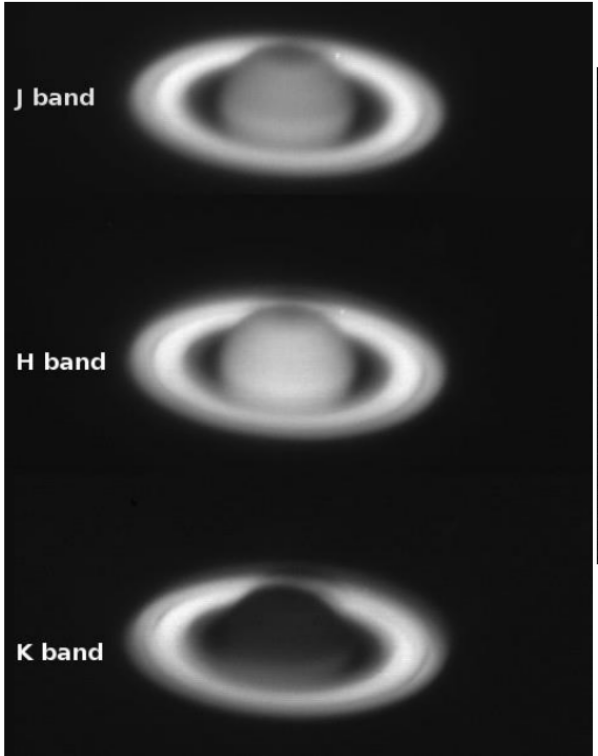
One of the first-light images captured by TIRCAM II, mounted on the axial port of the 3.6m DOT in 2016. This image of Saturn, taken through three filters- J, H, and Ks reveals distinct features of the planet in each wavelength.
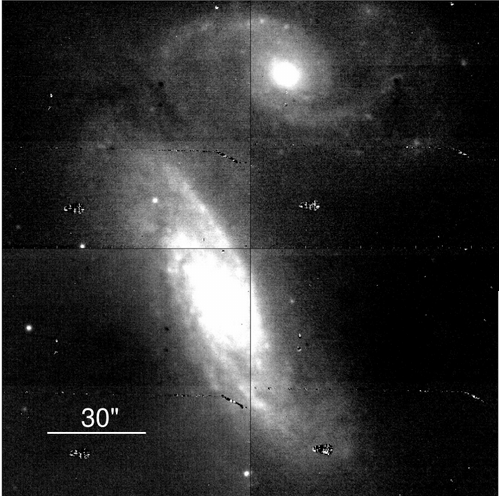
A mosaic image of the Butterfly Galaxies captured by TIRCAM II mounted on DOT in 2016, as part of its first-light observations.
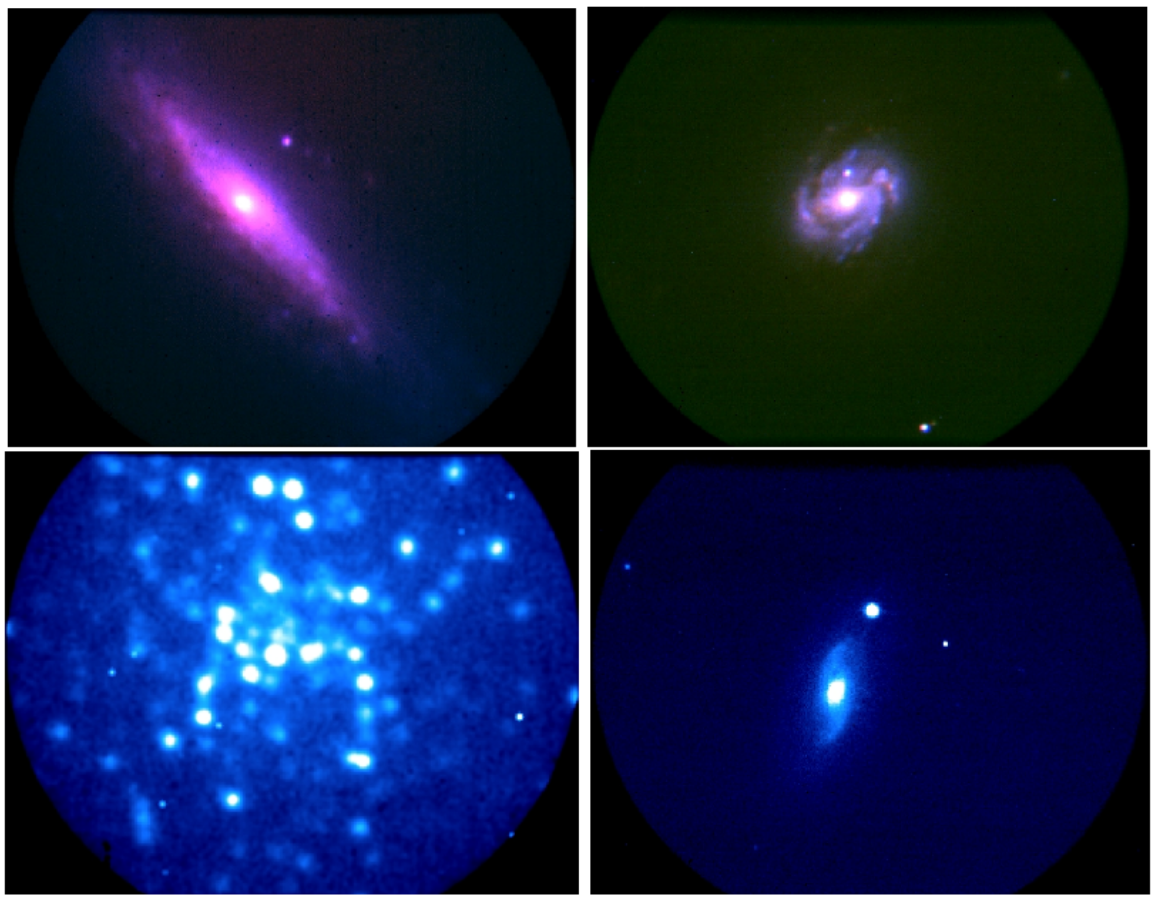
The color-composite images of the galaxies NGC 4666 (top-left) and NGC 4328 (top-right) created using J, H, and Ks band images through the slit viewer of TANSPEC mounted on the axial-port of 3.6m DOT. Also shown are J-band images of the globular star cluster Palomer 2 (bottom-left) and the Seyfert galaxy MCG+09-16-013 (bottom-right) observed with TANSPEC.
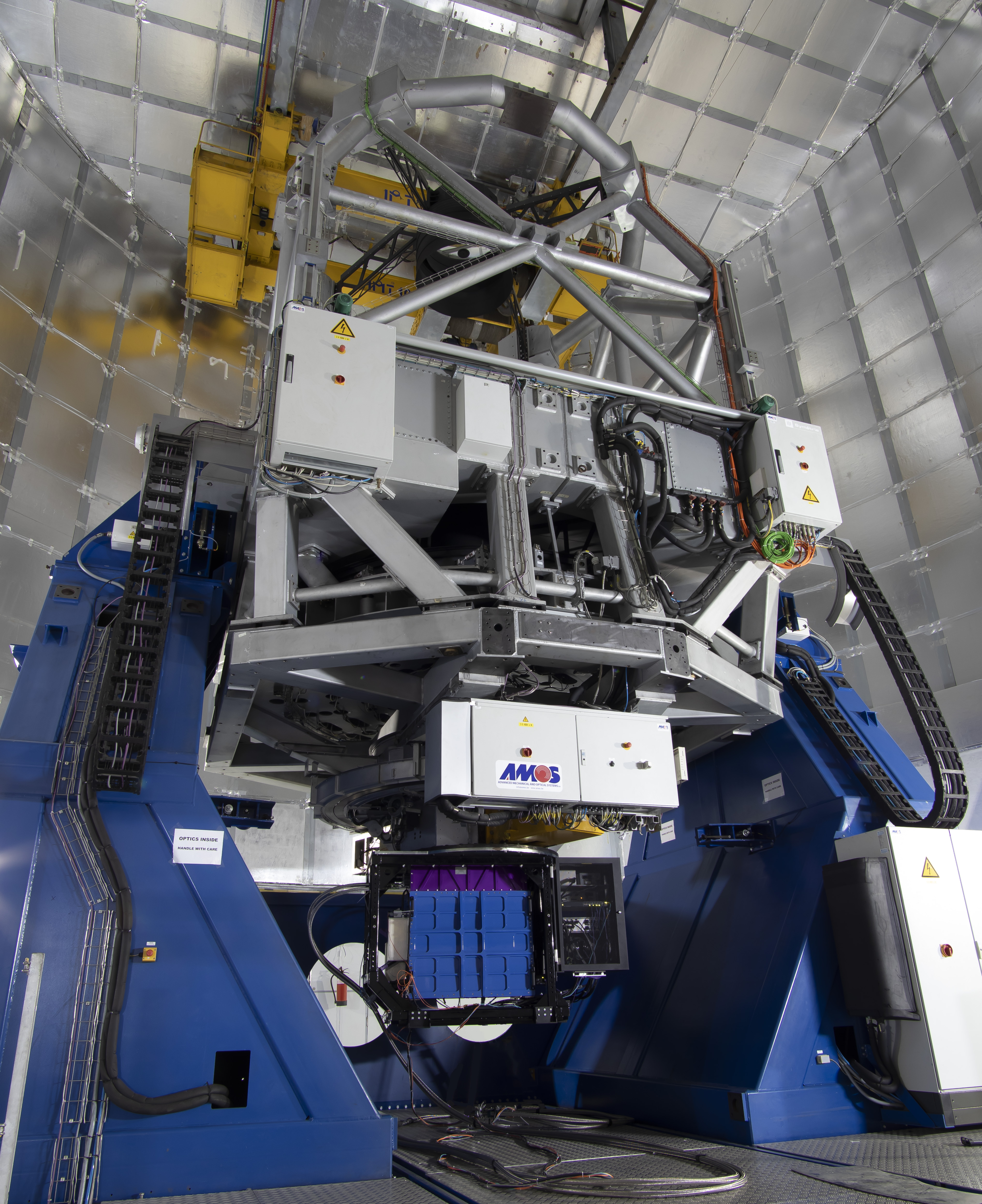
The 3.6m DOT shown from the front with TANSPEC mounted on its axial port.
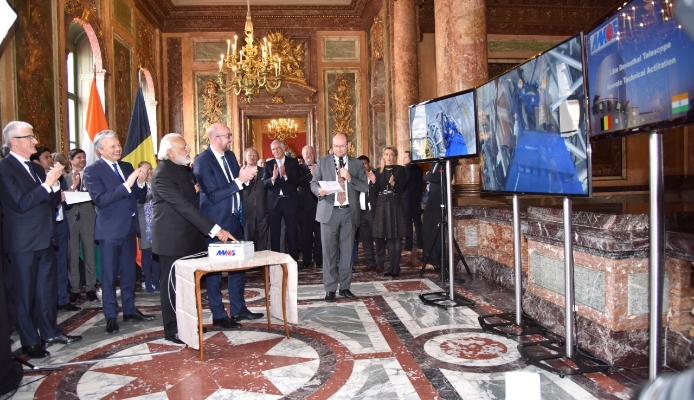
Prime minister Shri Narendra Modi ji carried out the technical activation of 3.6m DOT in the presence of his Belgian counterpart Mr. Charles Michel remotely from Belgium.
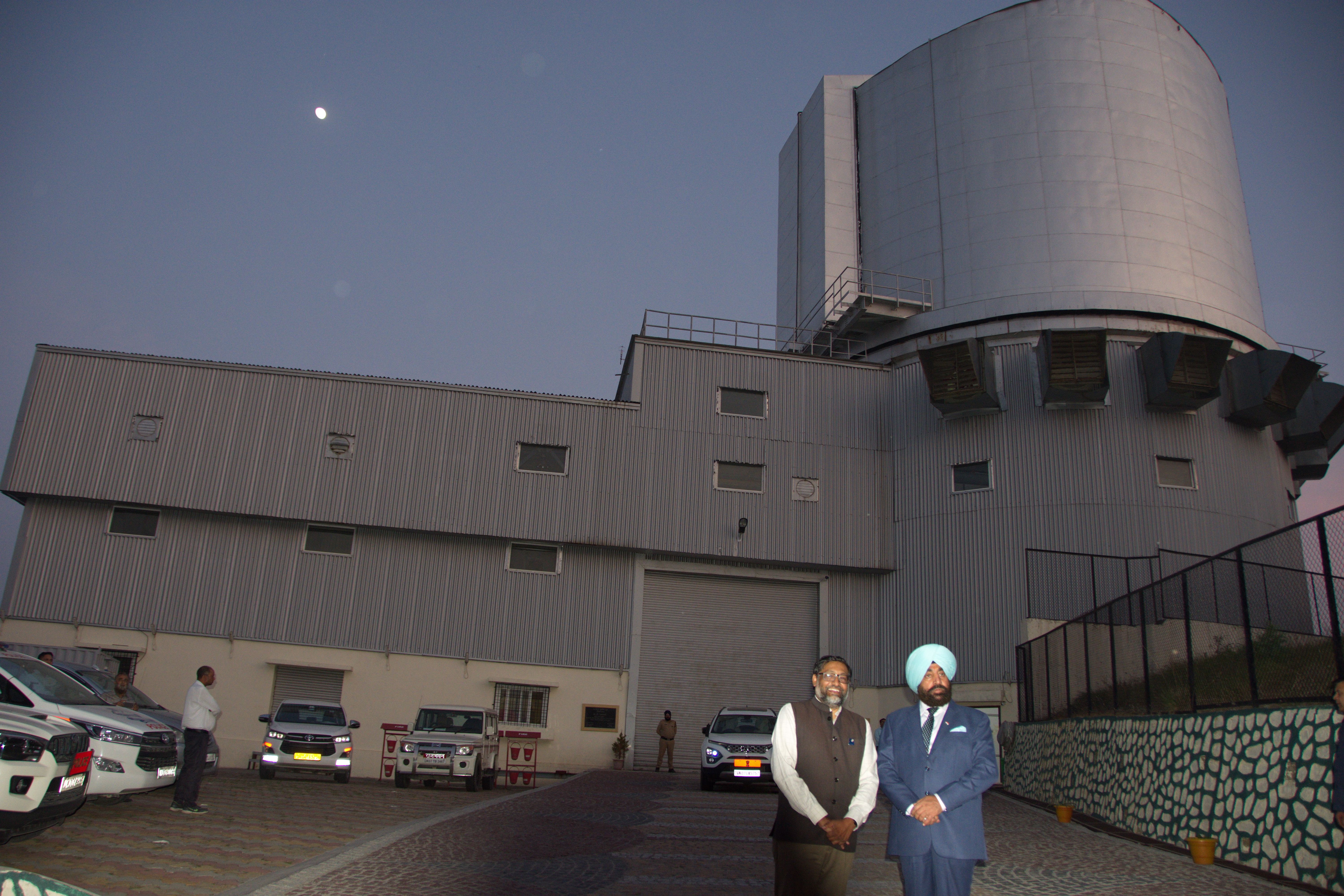
Lt Gen Gurmit Singh, Governer of Uttarakhand, during his visit to DOT, standing outside the DOT building alongside Prof. Dipanker Banerjee, Director of ARIES.
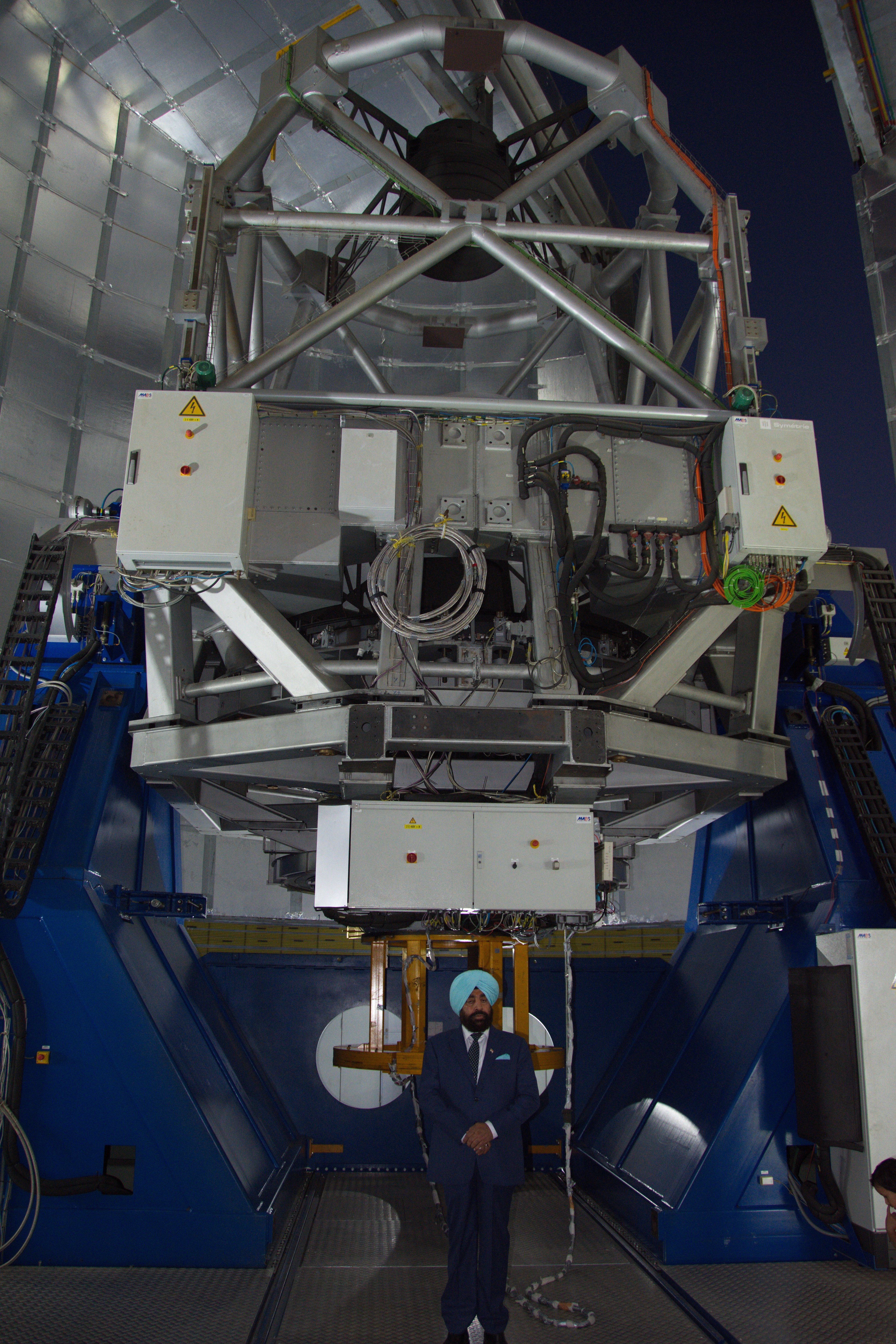
The Governer photographed in front of DOT.
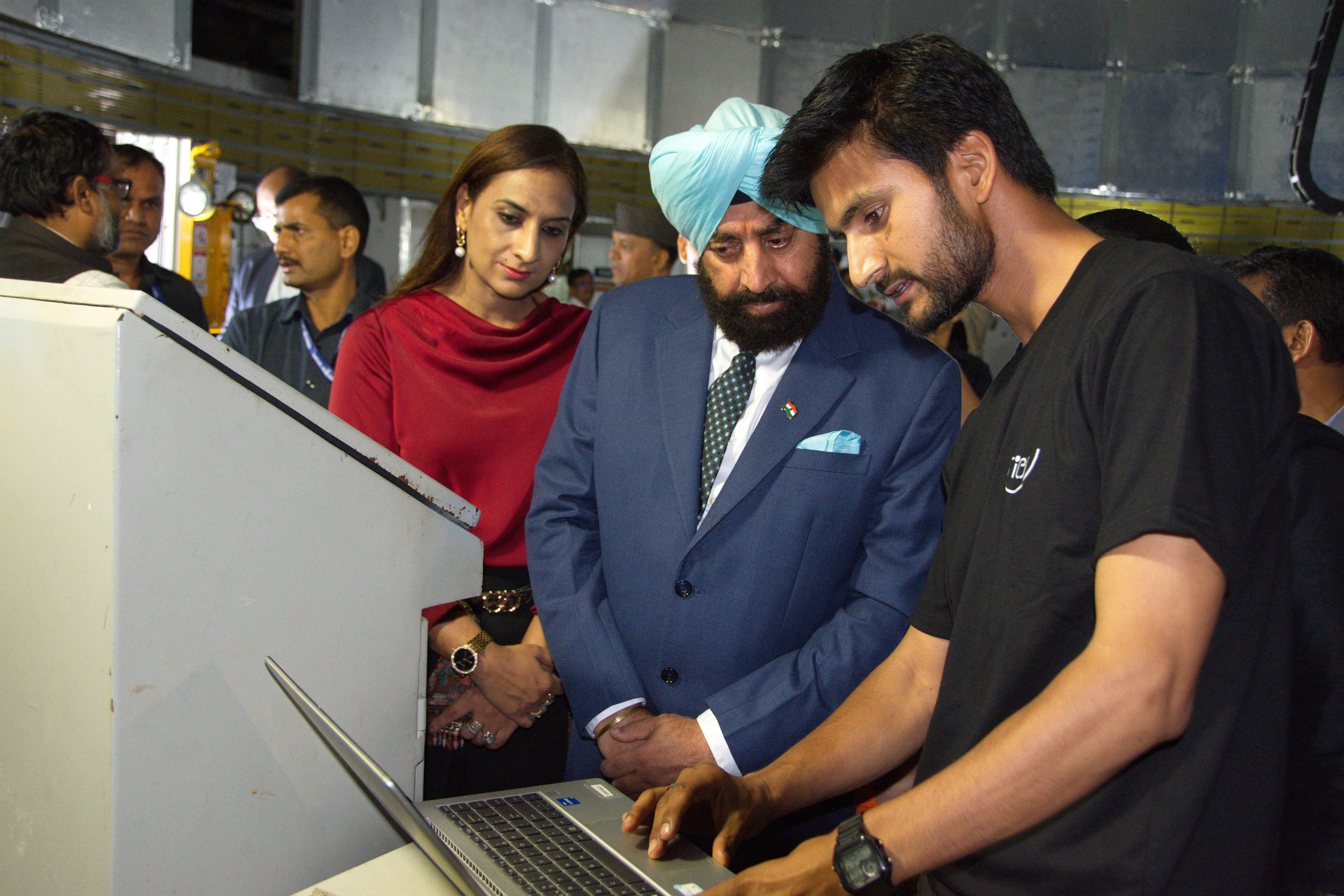
The Governer receiving a briefing on DOT operation from Jeewan, Scientific Assistant DOT.
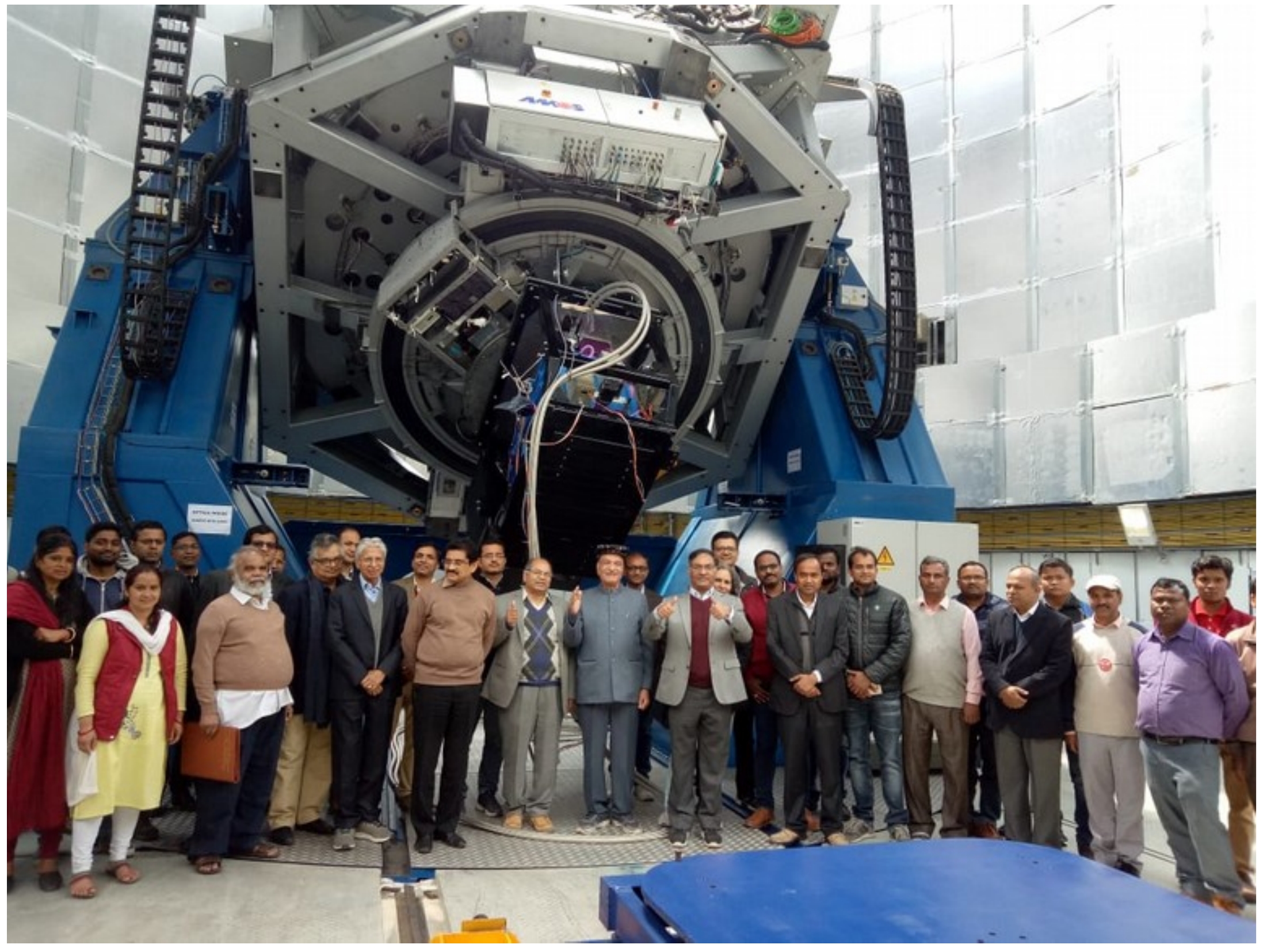
Prof. S. K. Joshi (former chair, ARIES General Body), Prof. P. C. Agarwal (former chair, ARIES General Body) and Prof. Ashutosh Sharma (former Secretary, DST) during their visit to Devasthal, Standing in front of DOT with TANSPEC mounted on axial port along with ARIES scientists, engineers and other staff members.
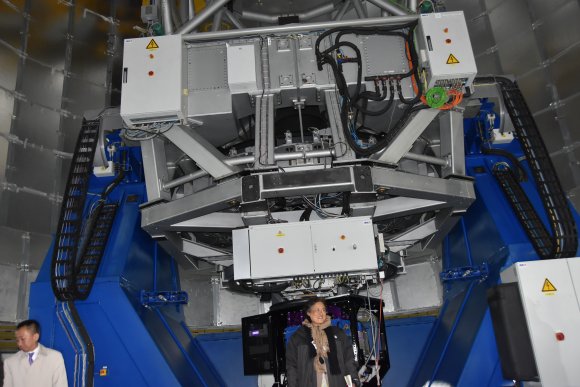
Her Royal Highness Princess Maha Chakri Sirindhorn, the Princess Royal of Thailand, during her visit to the 3.6m DOT.
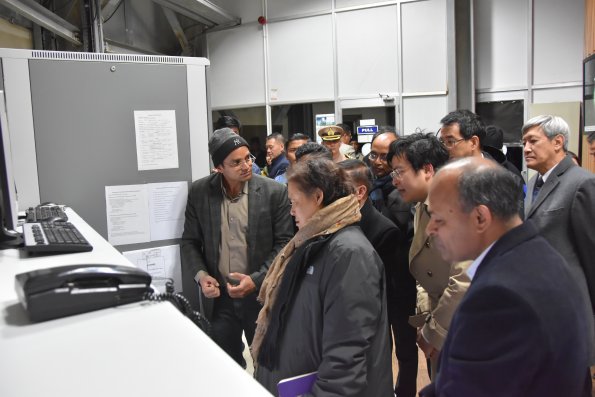
Her Royal Highness, the Princess Royal is being briefed on the DOT facility by Dr. Brijesh Kumar and Dr. Saurabh.
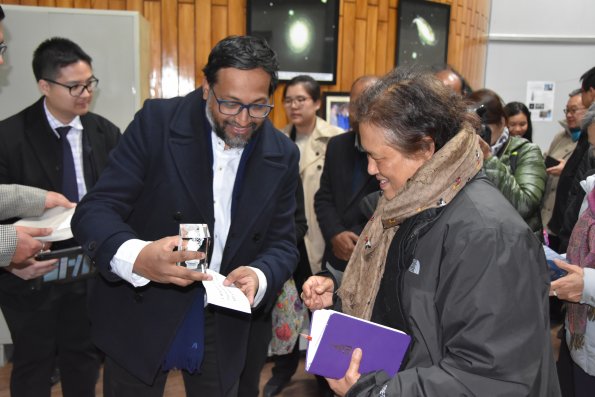
Prof. Dipankar Banerjee, former Director of ARIES, is presenting the DOT souvenir to the Princess Royal.
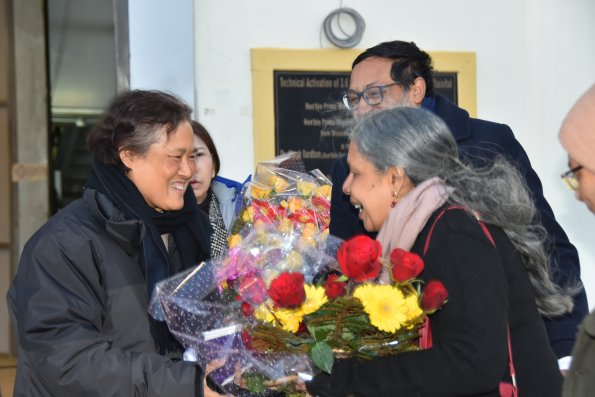
Prof. Annapurni Subramaniam, Director IIA Bangalore, welcoming the Princess Royal at Devasthal.
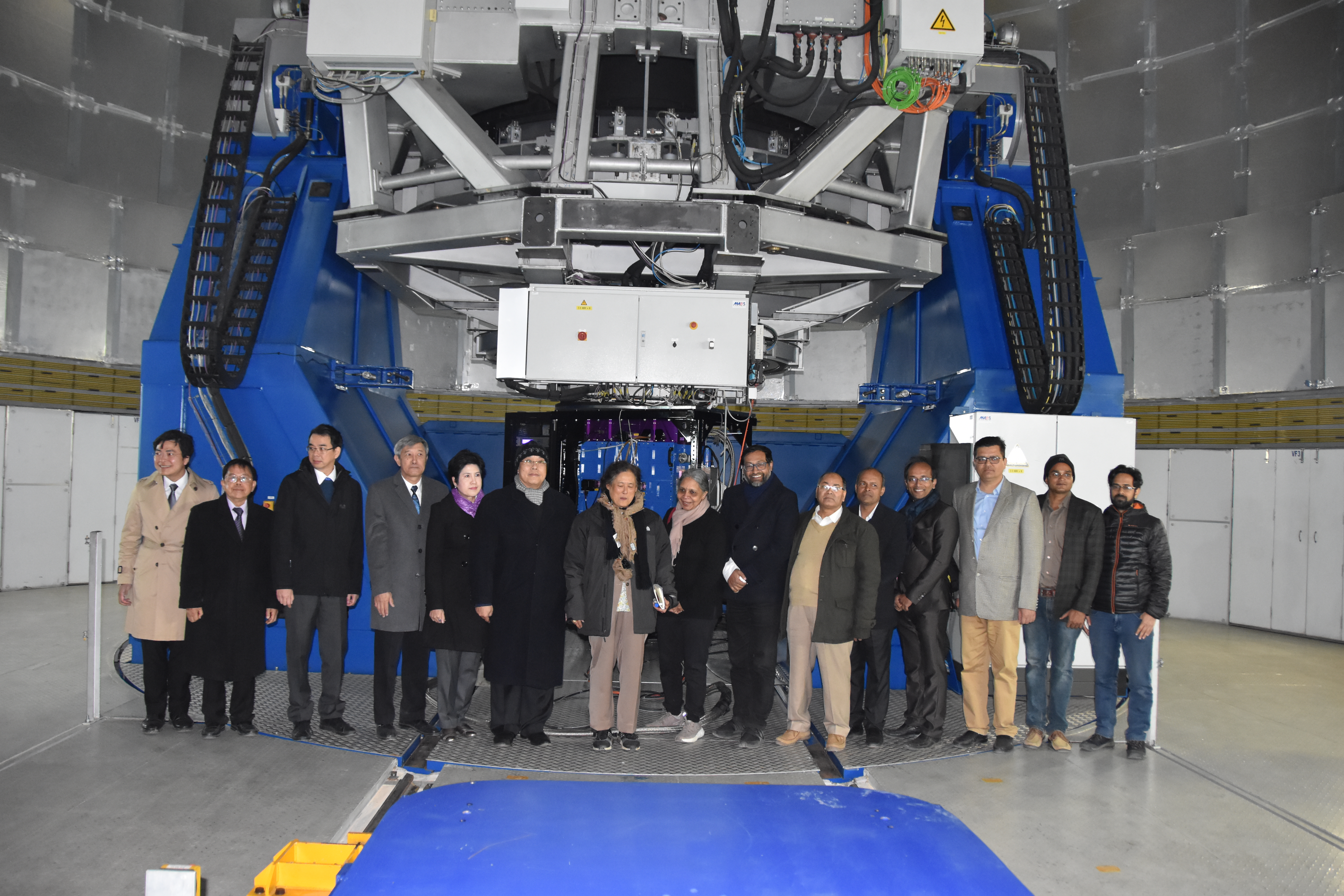
The Princess Royal, along with the Thai delegation, standing in front of 3.6m DOT accompanied by Prof. Annapurni Subramaniam, Director IIA Bangalore, and astronomers from ARIES - Prof. Dipankar Banerjee, Dr. Wahab Uddin, Dr. Brijesh Kumar, Dr. Indranil Chattopadhyay, Dr. Shashi Bhushan Pandey, Dr. Saurabh and Mr. Jayshreekar Pant.
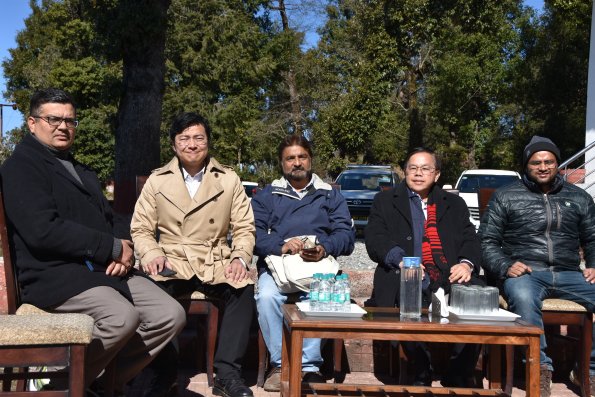
A diplomatic delegation of Thailand visited Devasthal Observatory; they are pictured along with Dr. Anil Pandey, Dr. S. B. Pandey and Dr. Saurabh of ARIES.
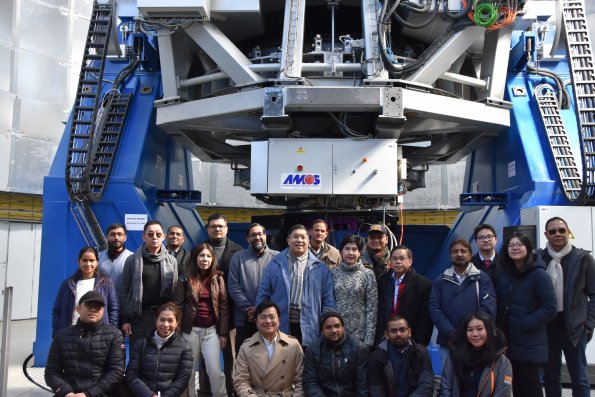
The diplomatic delegation of Thailand being pictured along with ARIES staff in front of the 3.6m DOT.
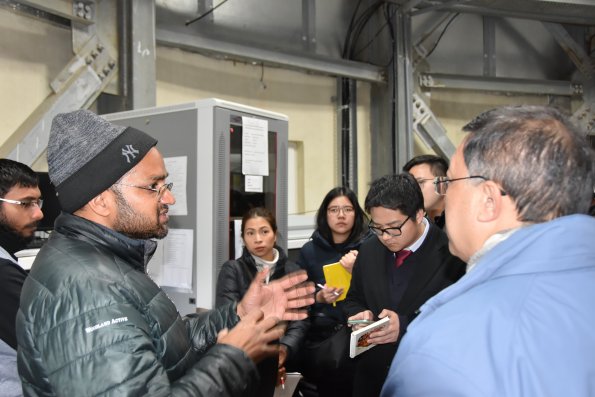
The Thai diplomatic delegation being briefed on the DOT facility by Dr. Saurabh.
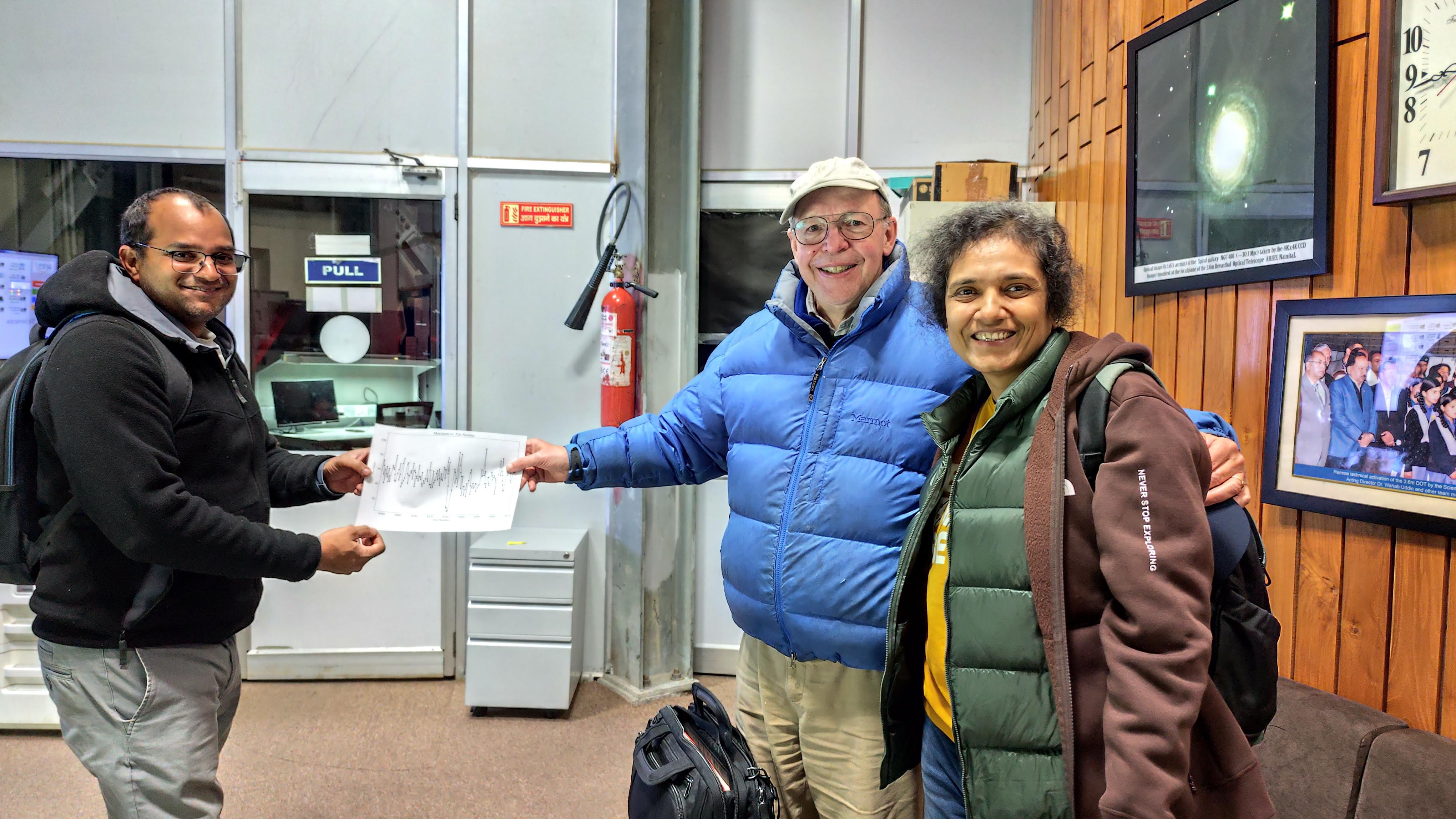
Prof. Richard French from the Space Science Institute, Wellesley, USA, and Prof. Anandmayee Tej from IIST Thiruvananthapuram visited Devasthal to observe the occultation of Uranus using TIRCAM II, mounted on the side port of the 3.6m DOT. In this picture, Prof. French and Prof. Tej are seen presenting a signed copy of the preliminary plot of the event to Dr. Saurabh in the DOT Telescope Control System (TCS) room.
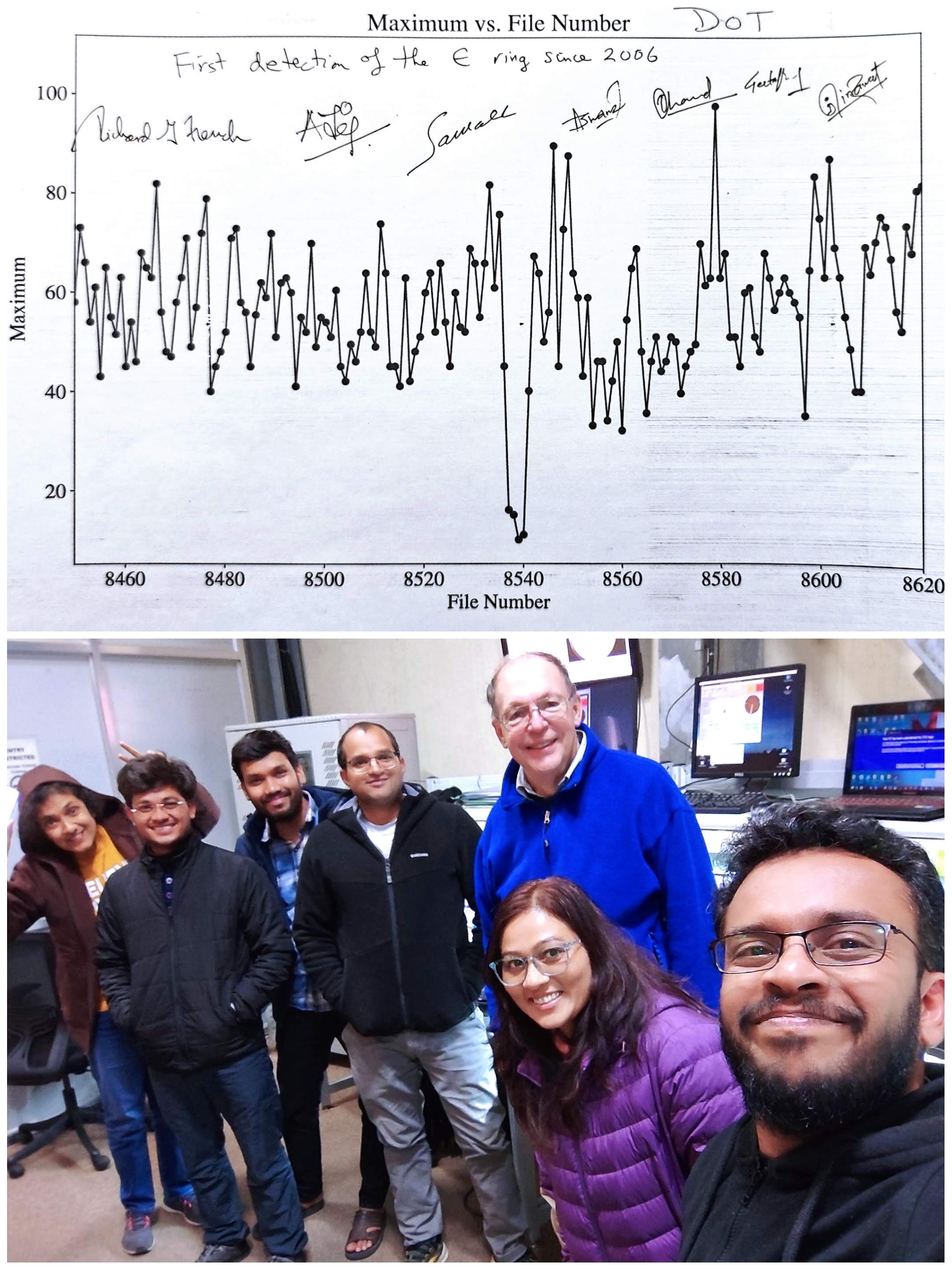
A preliminary plot of the Uranus occultation event, signed by the observation team (top panel). The prominent dip in the plot corresponds to the epsilon ring of Uranus, which was captured for the first time since 2006. Bottom panel showing the team involved in capturing this event.
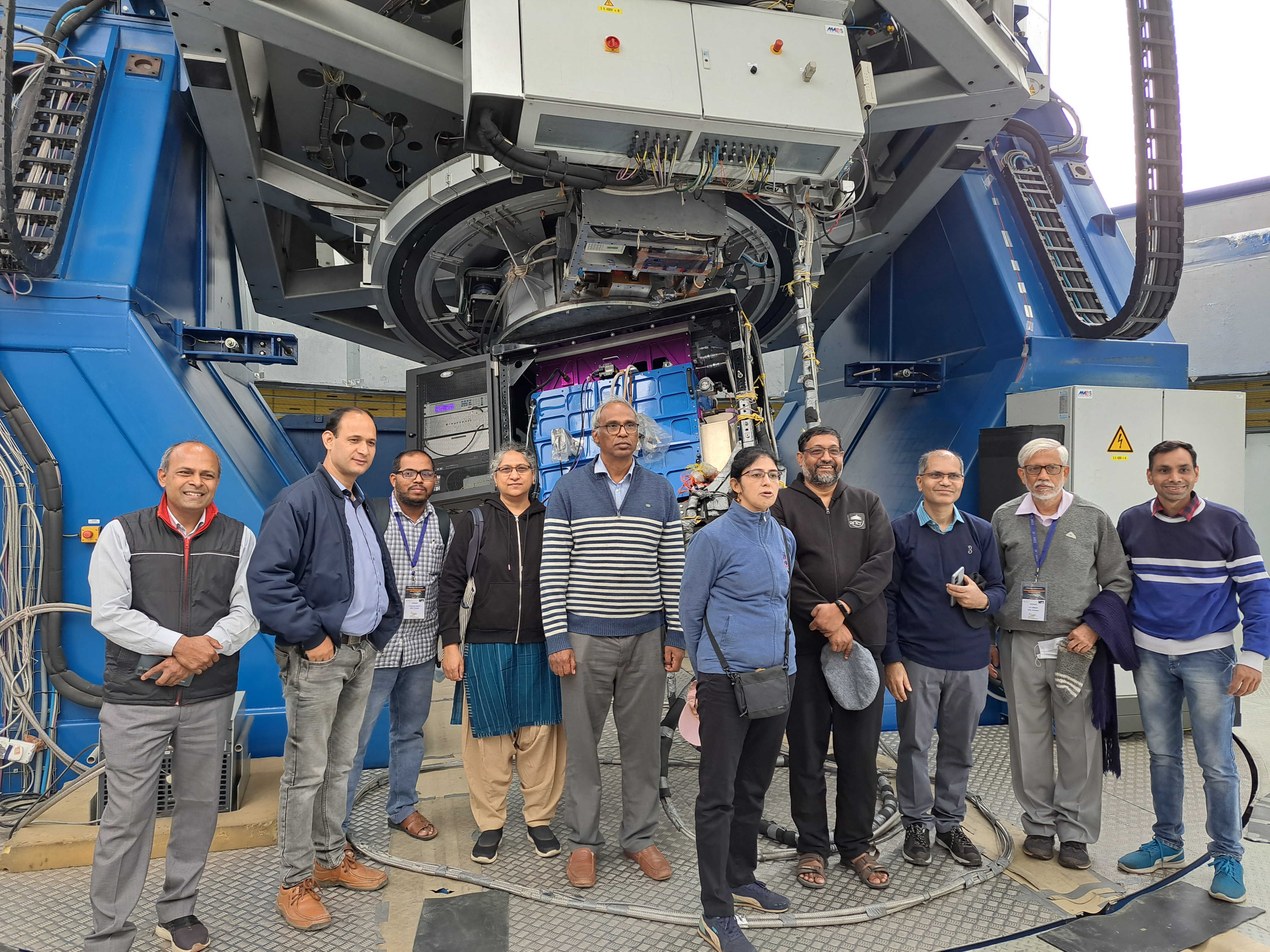
Prof. G. C. Anupama and Prof. Eswar Reddy from IIA, Prof. Sarita Vig from IIST, Prof. Swarna Kanti Ghosh and Prof. Devendra K. Ojha from TIFR, Dr. Lokesh Devangan from PRL, and Dr. Eswaraiah Chakali from IISER visited the 3.6m DOT during the Star Formation meeting hosted by ARIES in 2022.

Participants of Exploring the Cosmos with the 3.6-meter DOT: From Observations to Science Results (ExCoDOT-2025) workshop at the Devasthal campus, along with members of the workshop coordinating committee. The workshop was organized by ARIES from 27 to 31 October 2025 to acquaint early-career astronomers from across India with the 3.6-meter Devasthal Optical Telescope, its backend instruments, and associated data reduction methodologies.
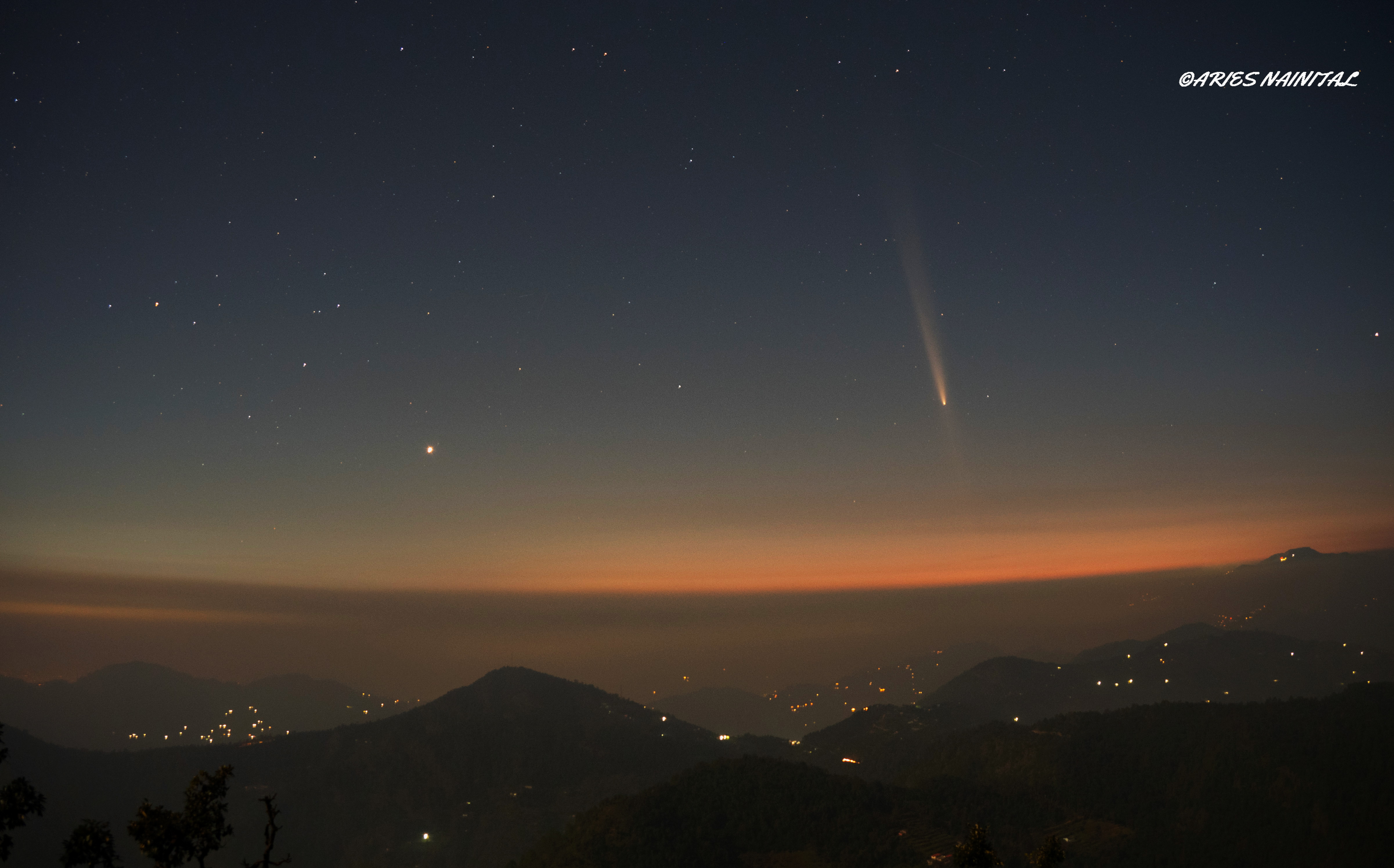
The luminous trail of Comet C/2023 A3 Tsuchinshan-ATLAS, visible from Devasthal Observatory (Credit: ARIES Nainital).
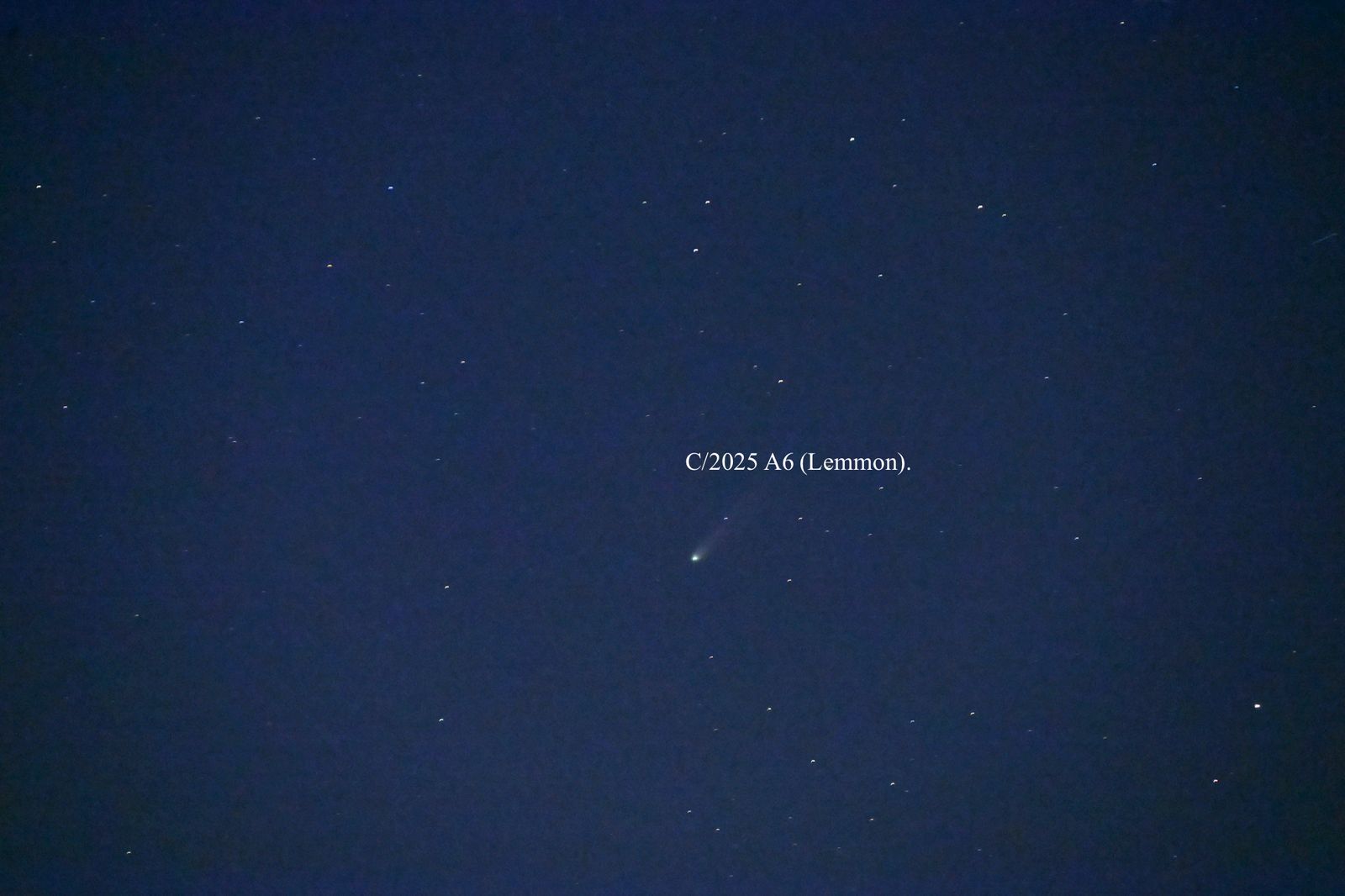
A non-periodic comet named C/2025 A6 also known as Lemmon, imaged from Devasthal Observatory (Credit: Himanshu Rawat).
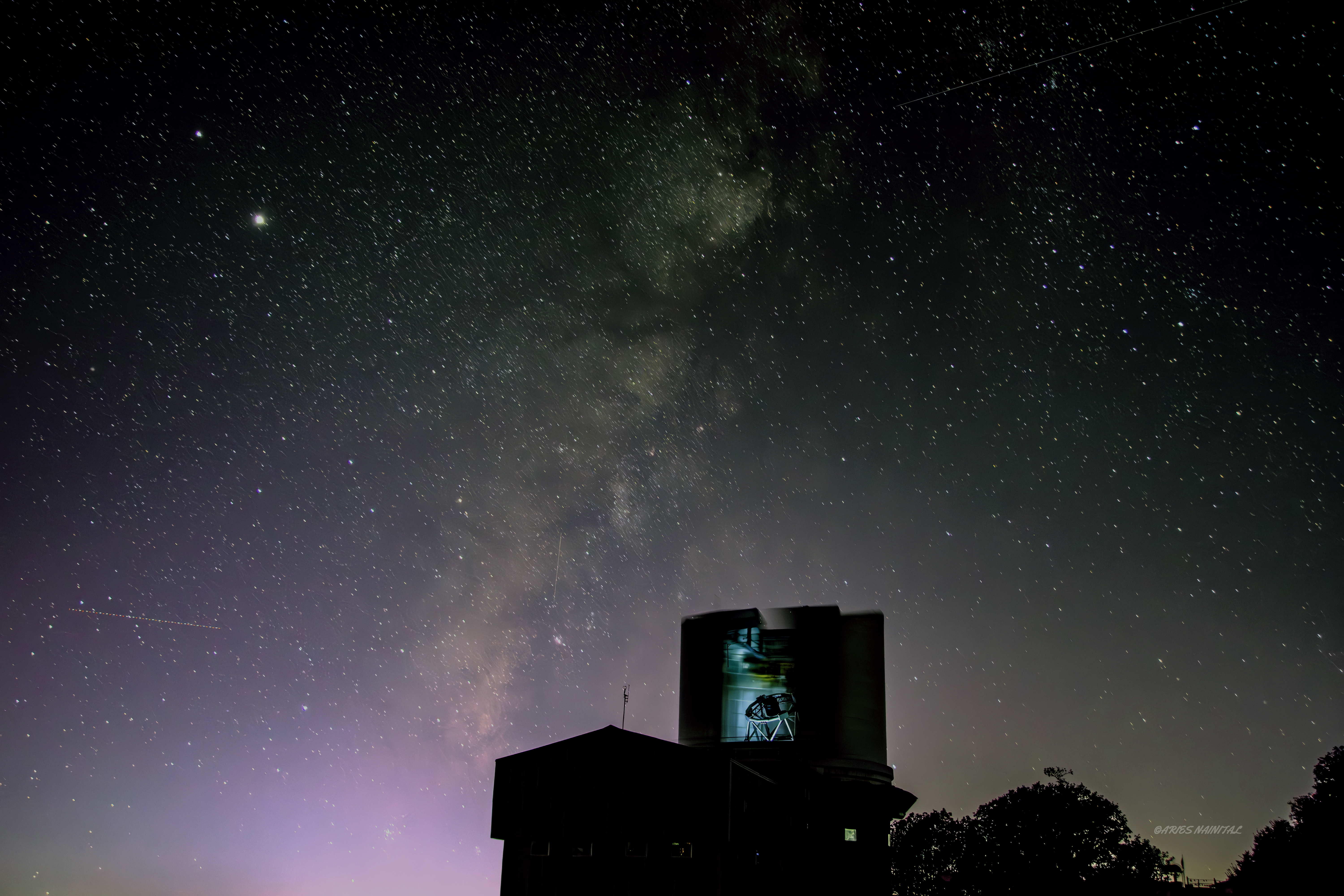
The DOT seen through the open dome slit (Credit: ARIES, Nainital).
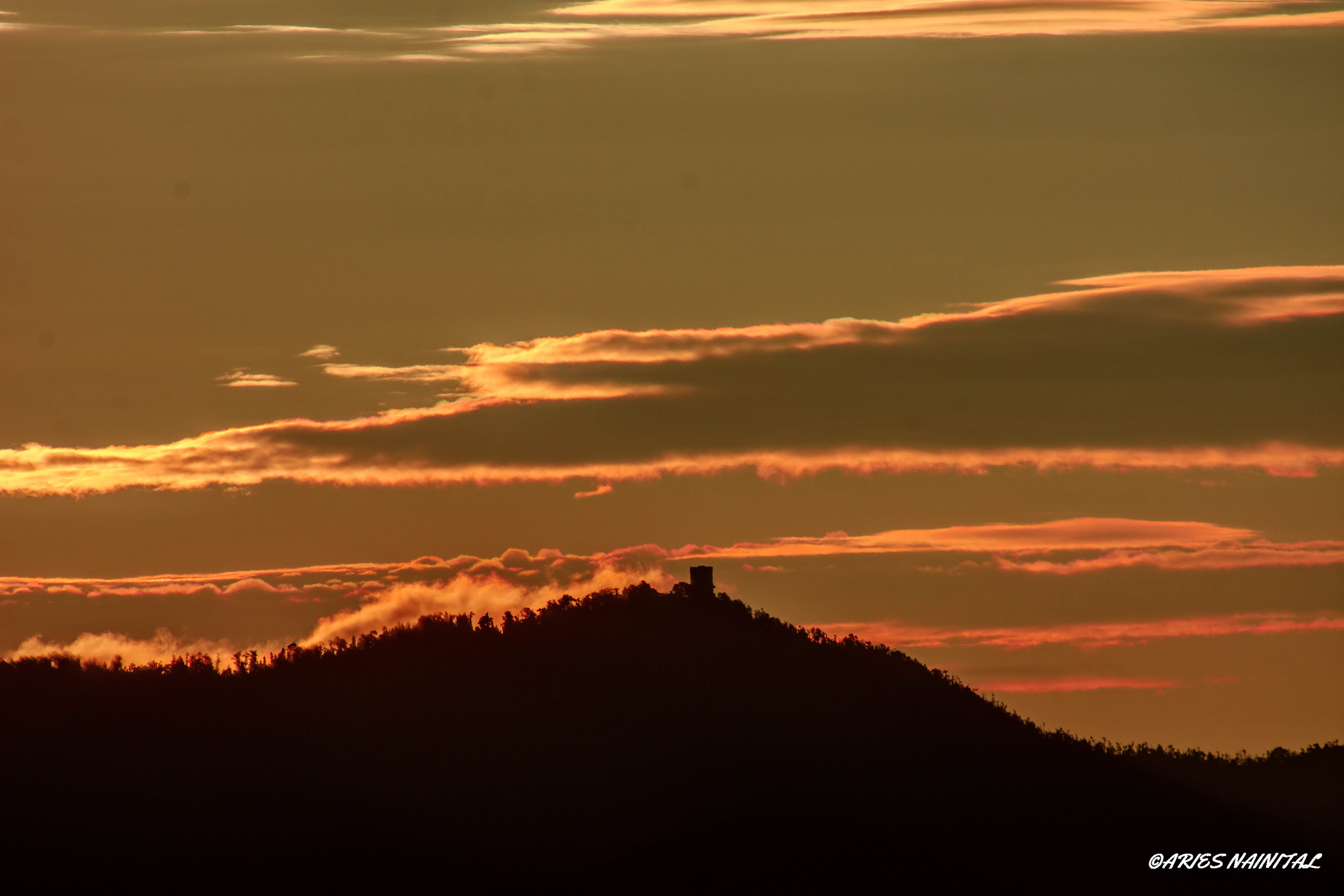
The DOT buiding seen from the Devasthal Observatory base camp framed by warm glow of sunrise (Credit: ARIES, Nainital ).
The DOT building illuminated under the cosmic glow of the Milky Way. (Credit: Sarath Prabhav).
The Moon rising in all its brilliance over Devasthal. (Credit: Sarath Prabhav).
The Milky Way dazzles in the night sky of Devasthal (Credit: Sarath Prabhav).
Nighttime capture of the Milky Way as visible from Devasthal (Credit: Sarath Prabhav).
The DOT with its dome slit open to the sky (Credit: Prakash Dhami)
Long-exposure view of star trails seen from Devasthal (Credit: Sarath Prabhav).
The star trails captured from Devasthal (Credit: Sarath Prabhav).
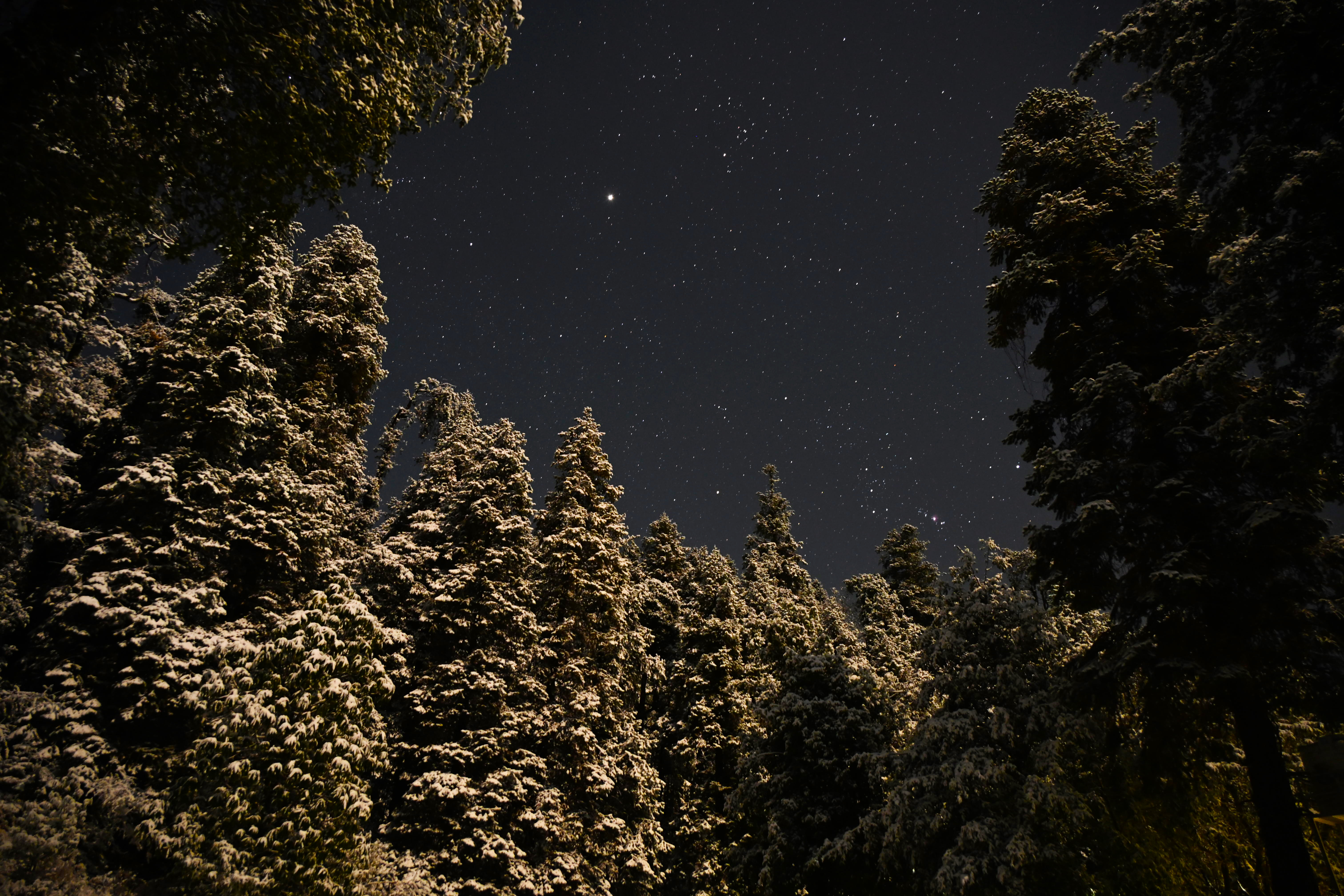
Jupiter (brightest object in the sky) visible from Devasthal (Credit: Nitin Rawat).
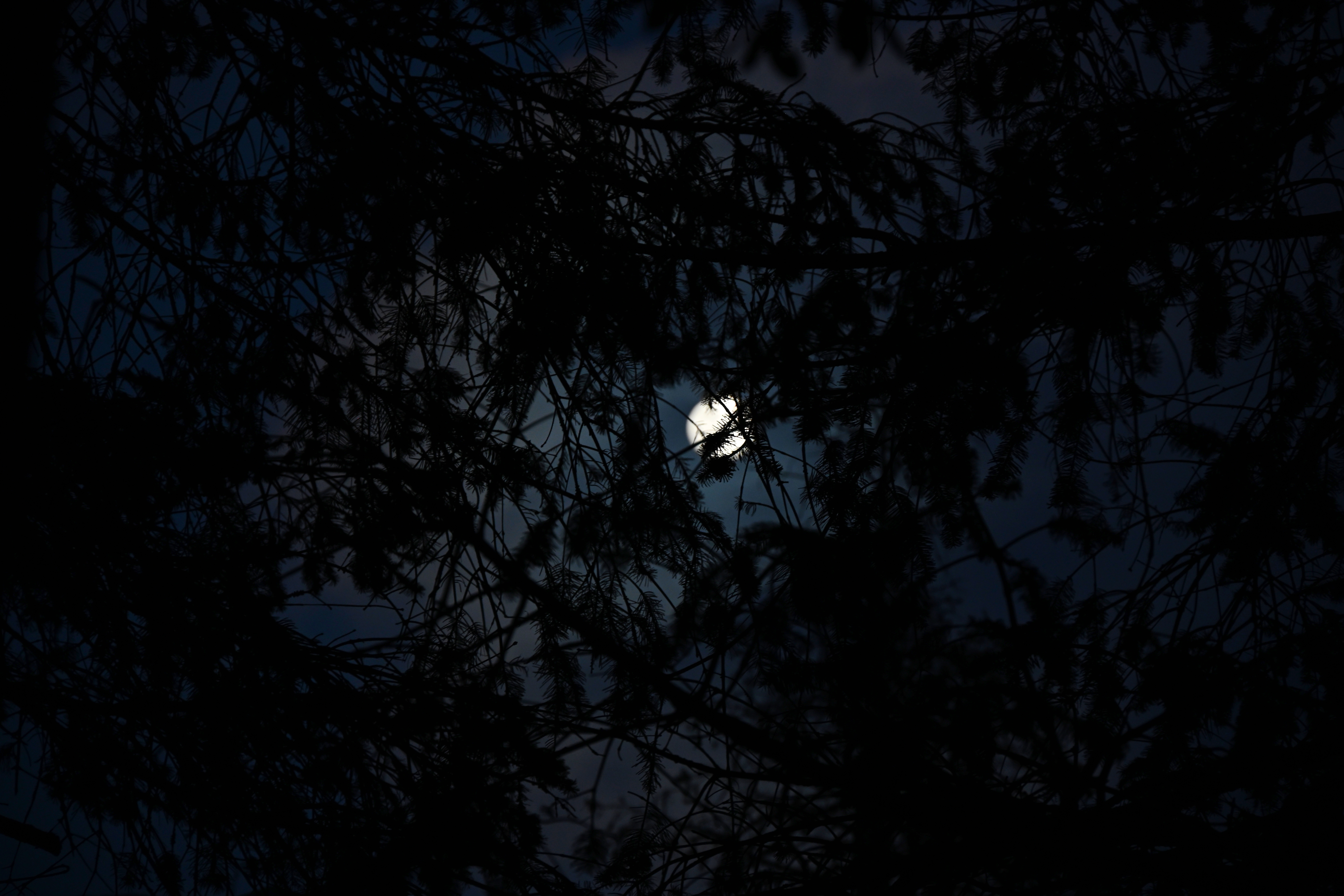
The Moon hiding behind the tree (Credit: Nitin Rawat).
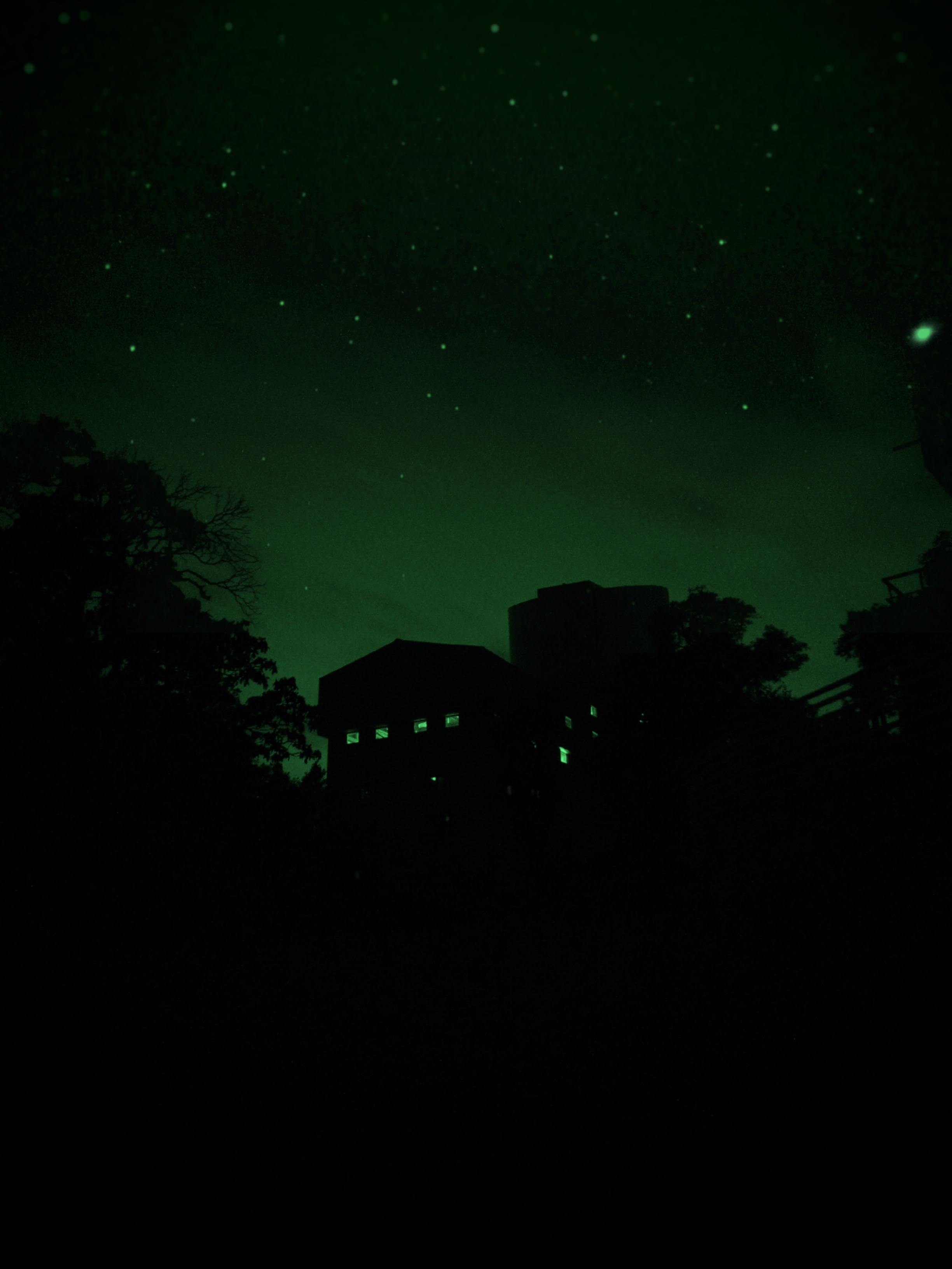
The DOT building captured after sunset (Credit: Nitin Rawat).
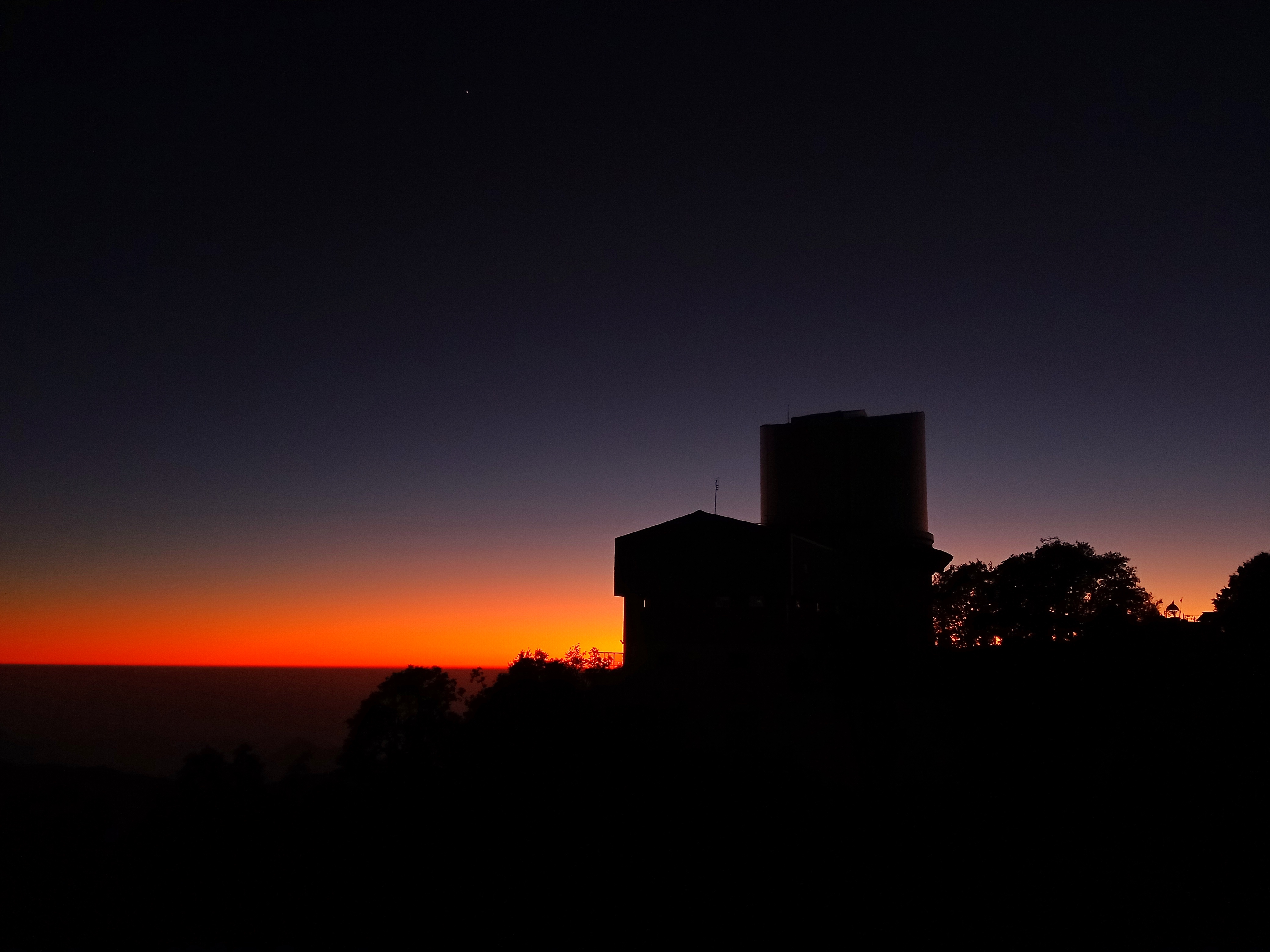
The western horizon as visible behind the DOT building during sunset (Credit: Nitin Rawat).
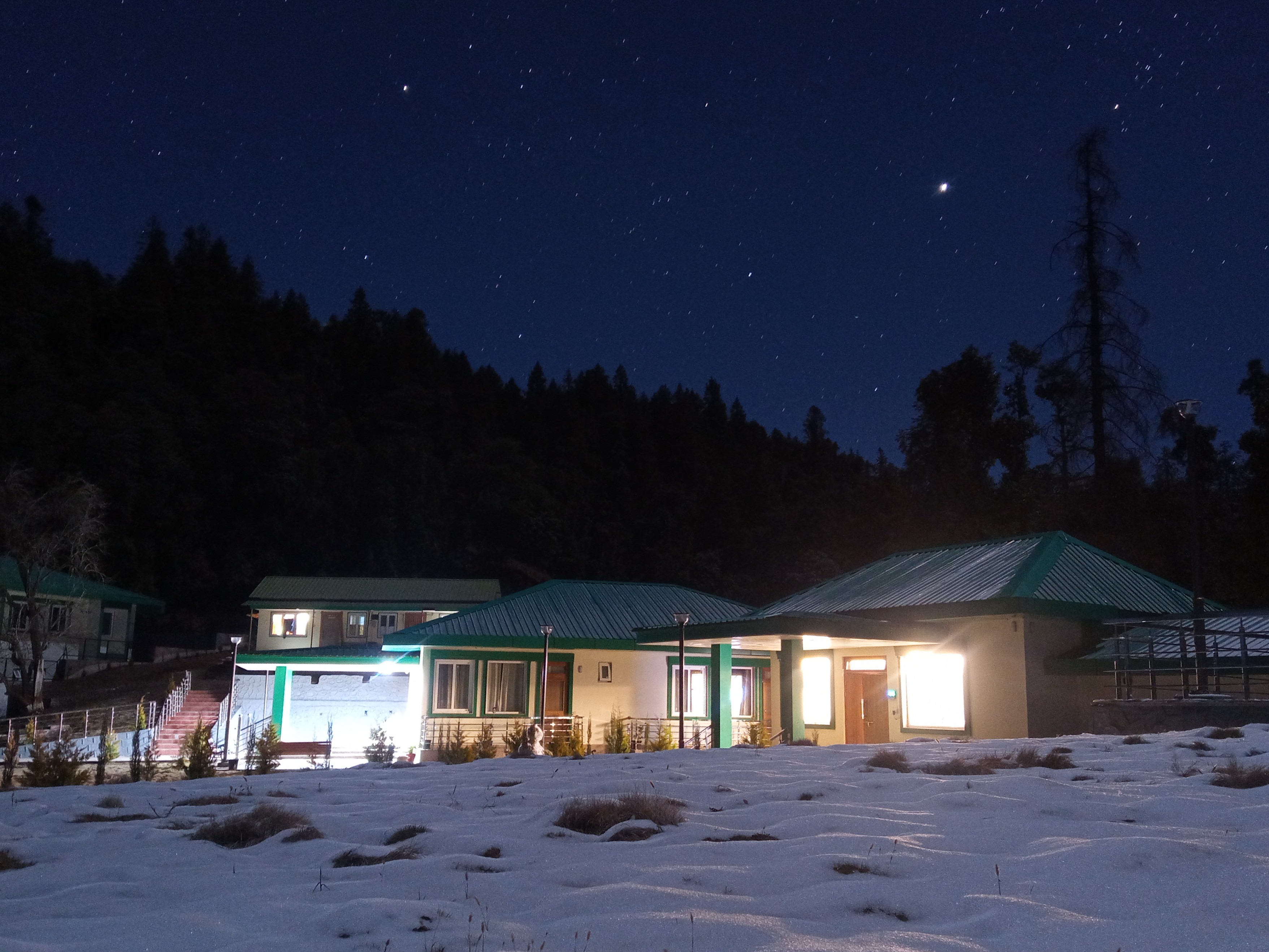
The Jupiter (brightest star in the frame) captured on a snowy night from Devasthal base camp (Credit: Nitin Rawat).
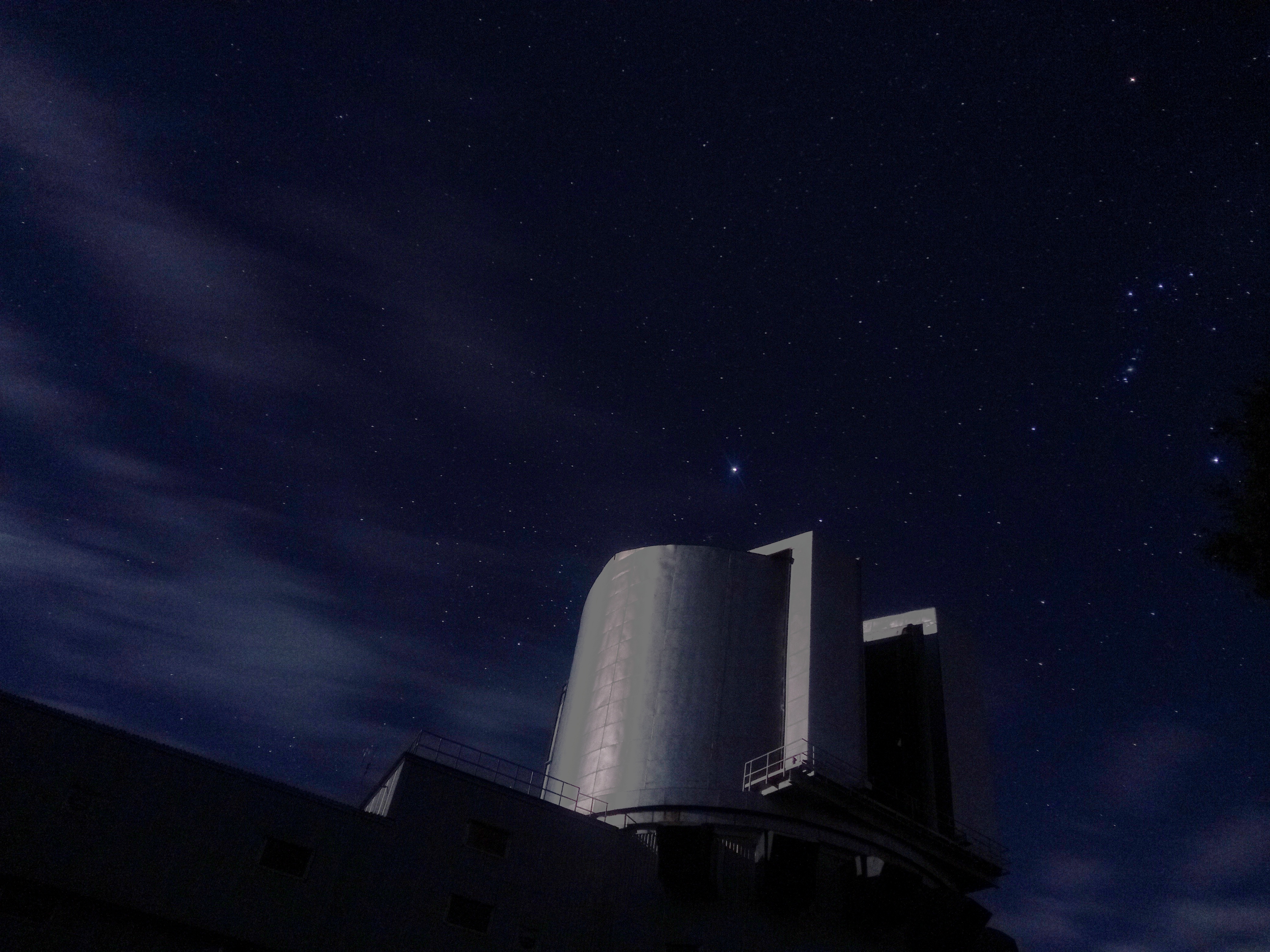
Sirius, the brightest star of night sky captured over the DOT building (Credit: Nitin Rawat). Sirius is a binary star system composed of a main-sequence star and white dwarf star.
Venus captured from the Devasthal campus (Credit: Nitin Rawat).
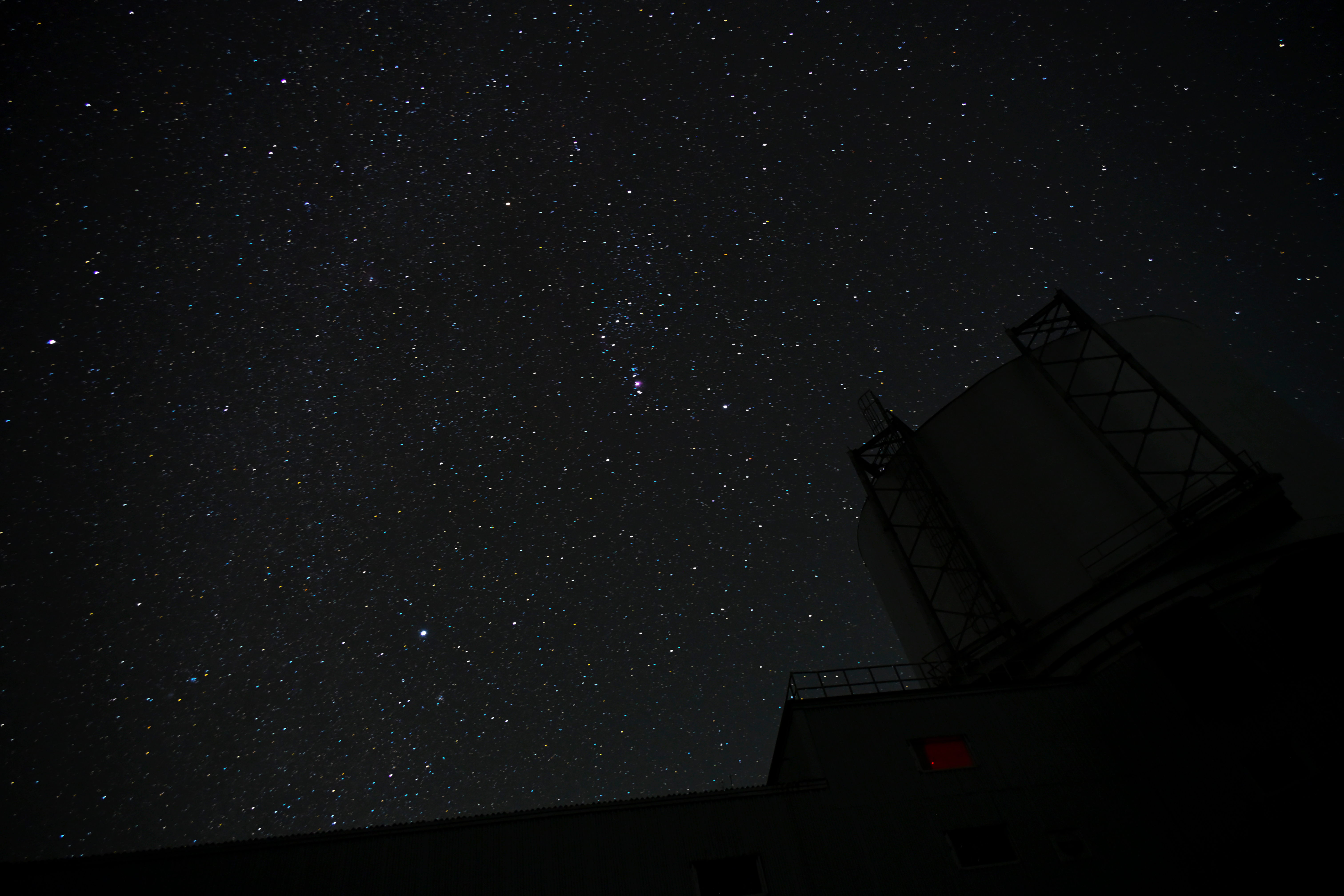
The Orion constellation imaged over the DOT building (Credit: Nitin Rawat).
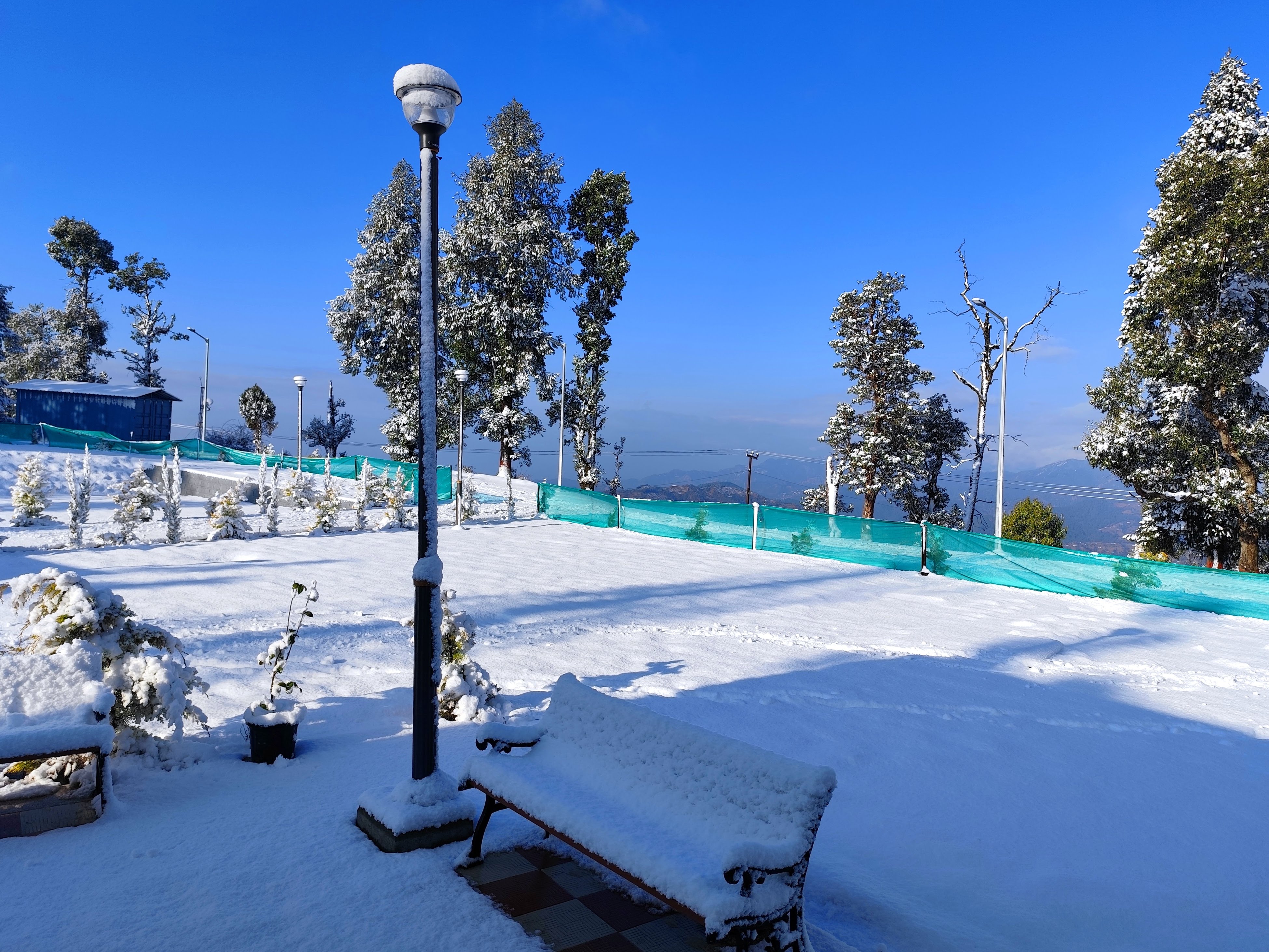
A wintry scene of the Devasthal campus blanketed in snow, December 2024 (Credit: Ashish Devaraj).
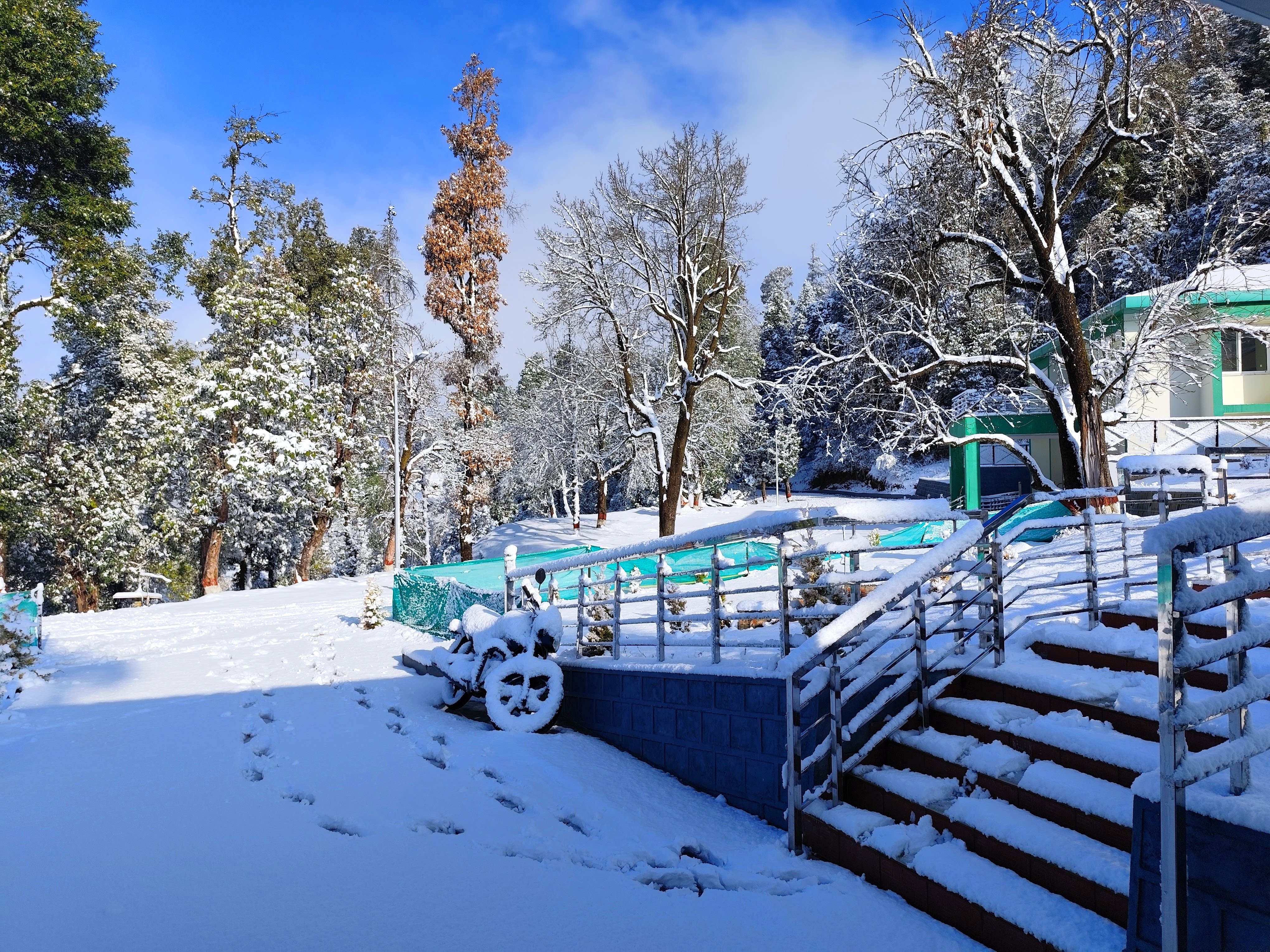
Snow-covered Devasthal campus in December 2024 (Credit: Ashish Devaraj).
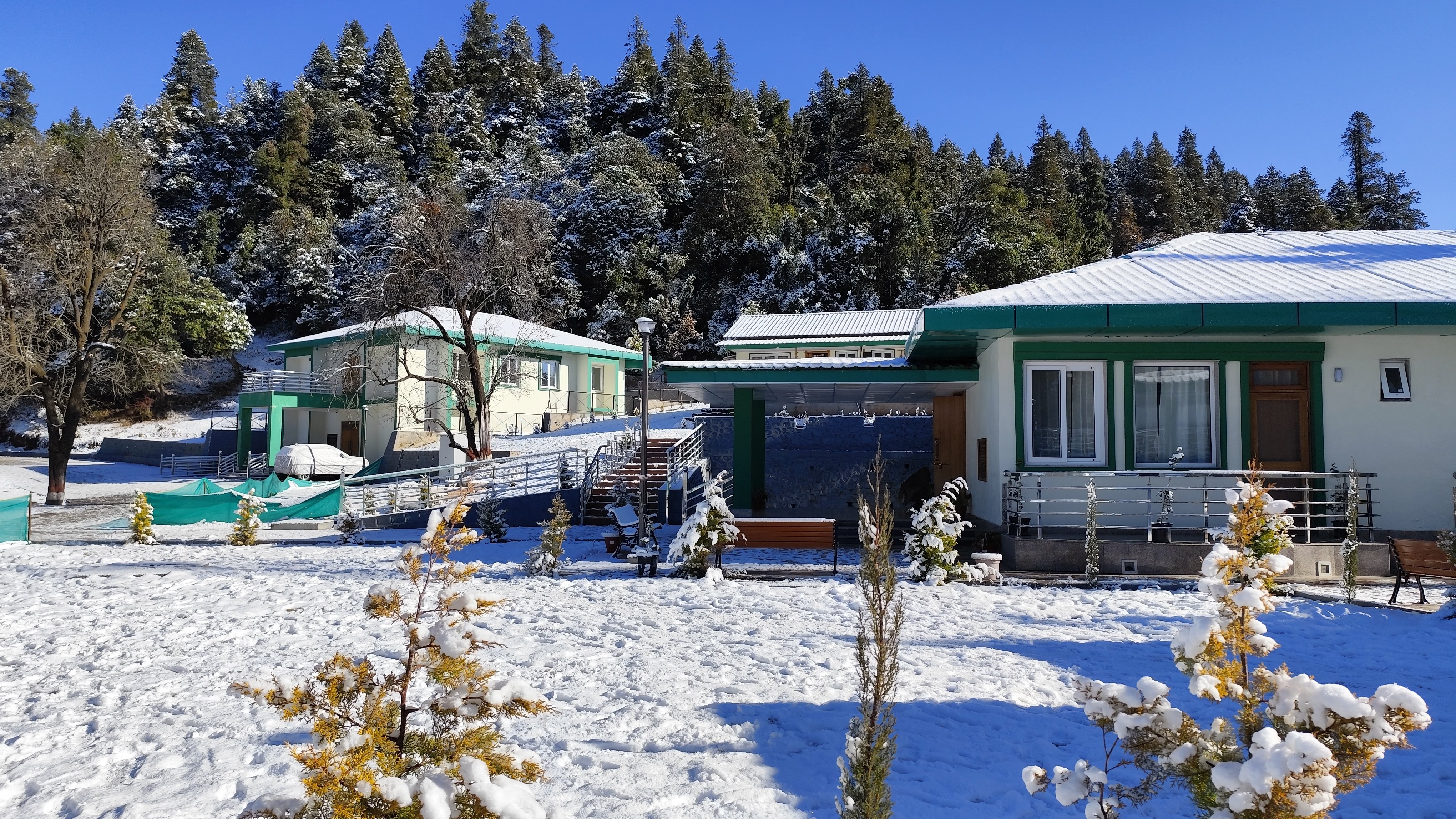
Devasthal campus in the midst of December 2024 snowfall (Credit: Ashish Devaraj).
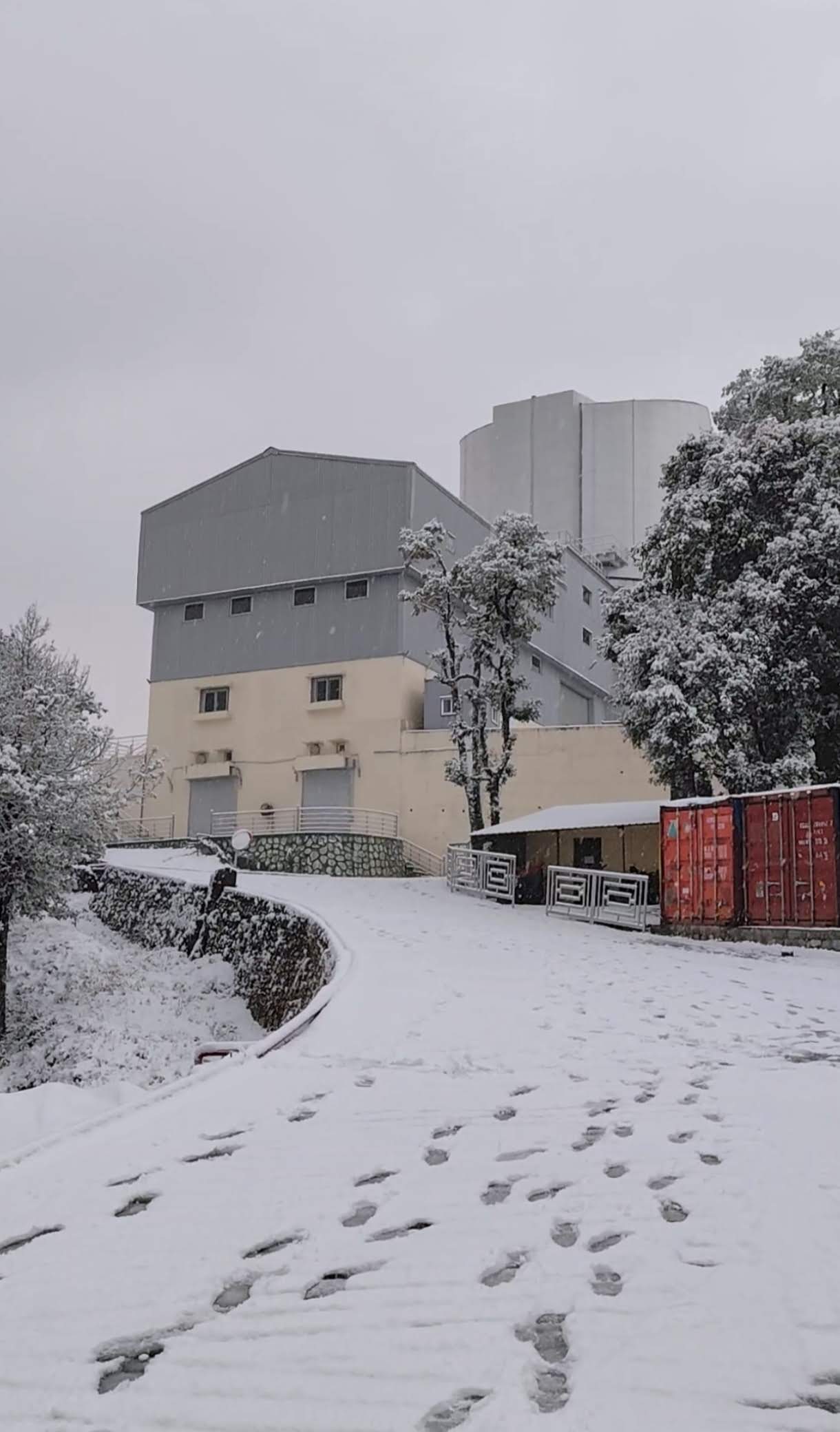
The DOT building captured amid snowfall in December 2024 (Credit: Ashish Devaraj).
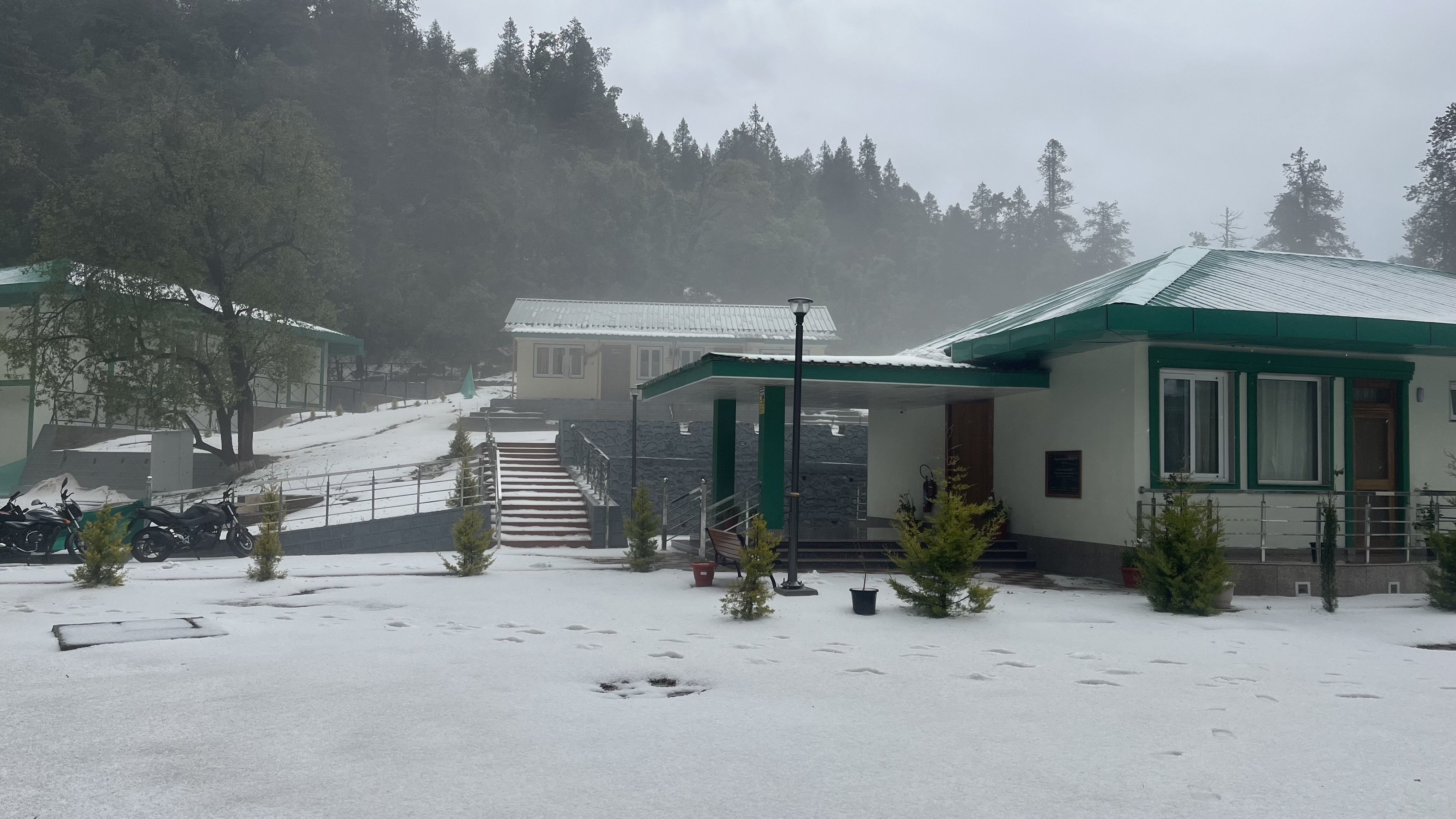
The Devasthal observatory premises experiencing a hail event (Credit: Prakash Dhami).
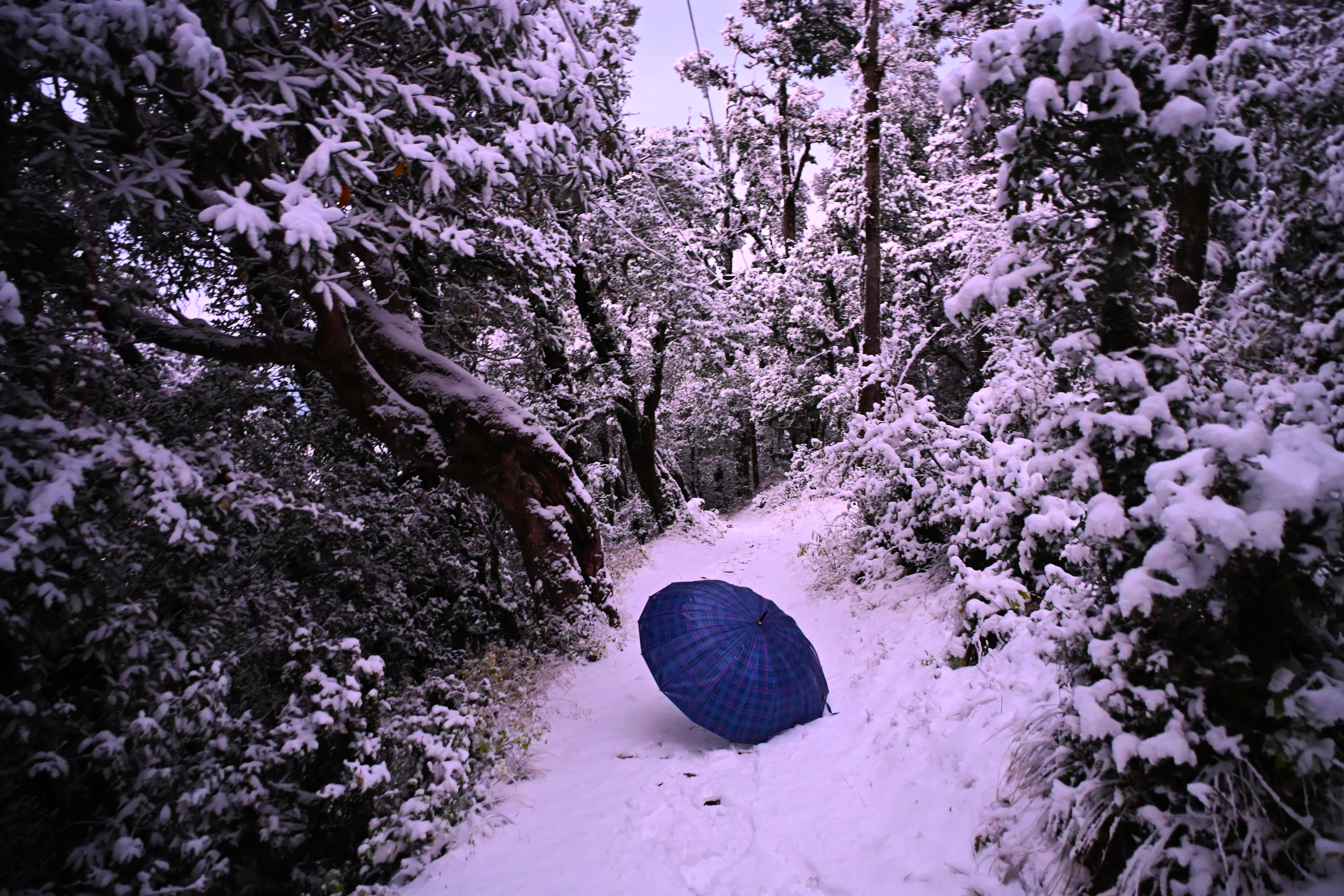
The snowy path in the campus (Credit: Nitin Rawat).
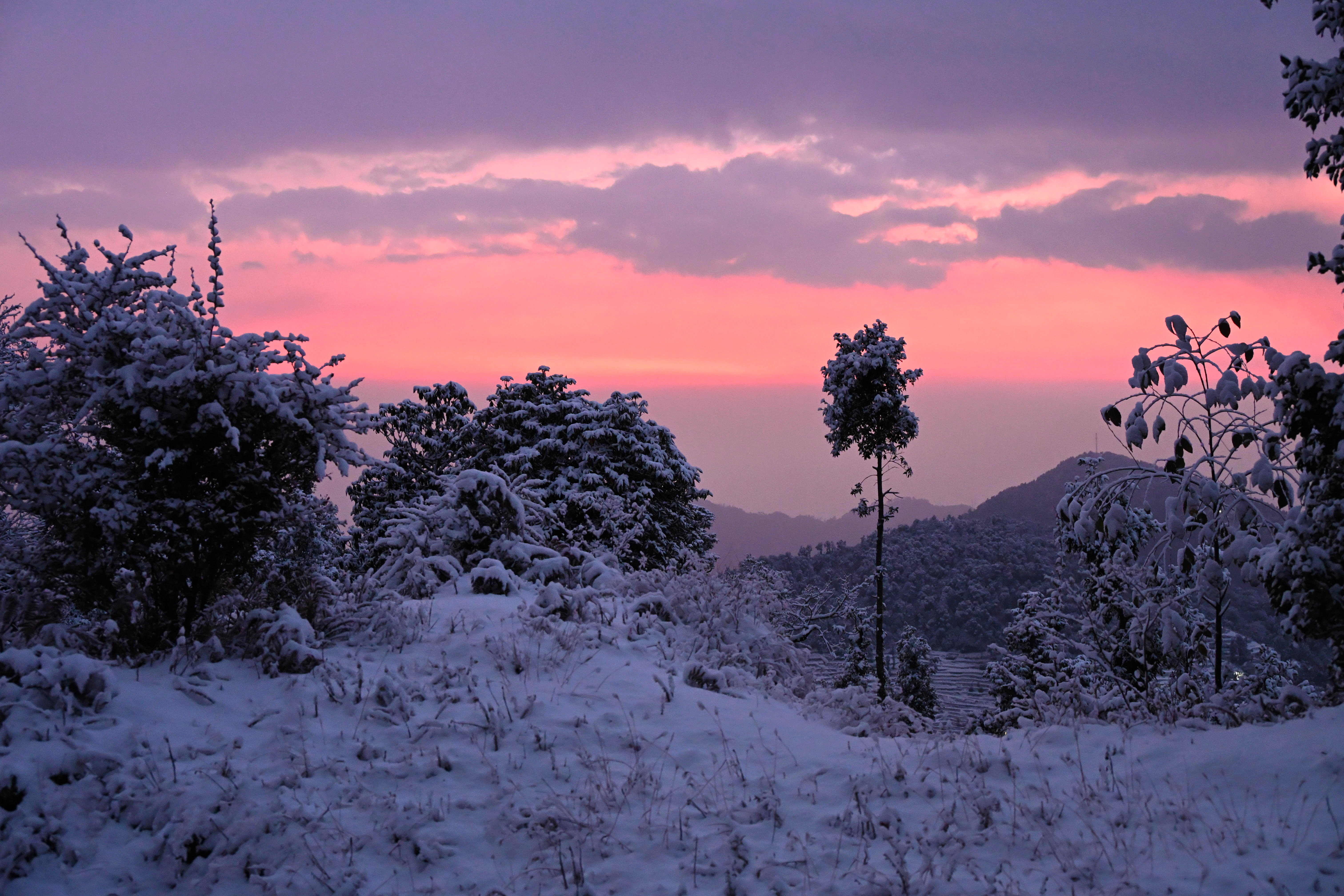
The snow in the campus (Credit: Nitin Rawat).
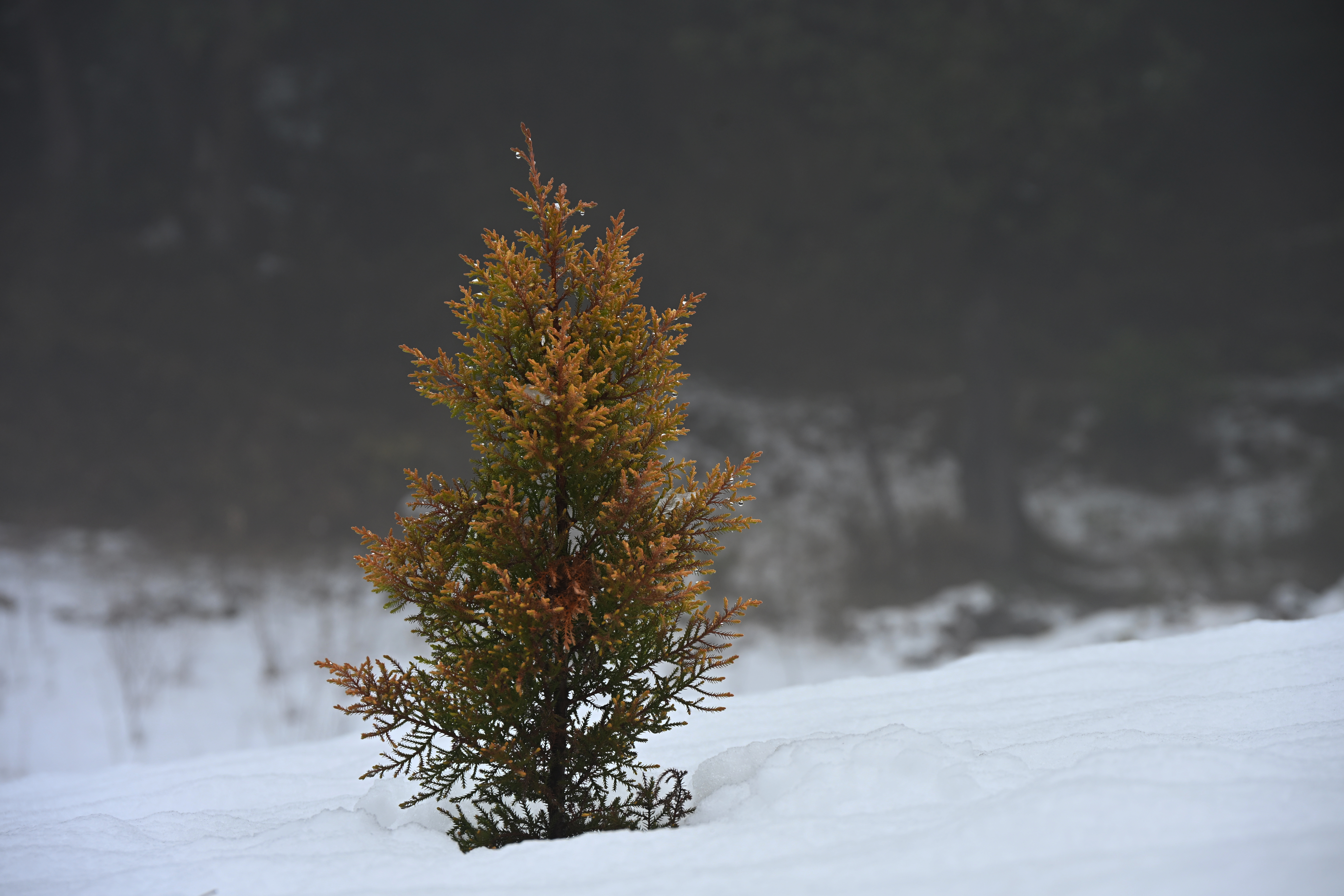
The plant captured during snowfall (Credit: Nitin Rawat).
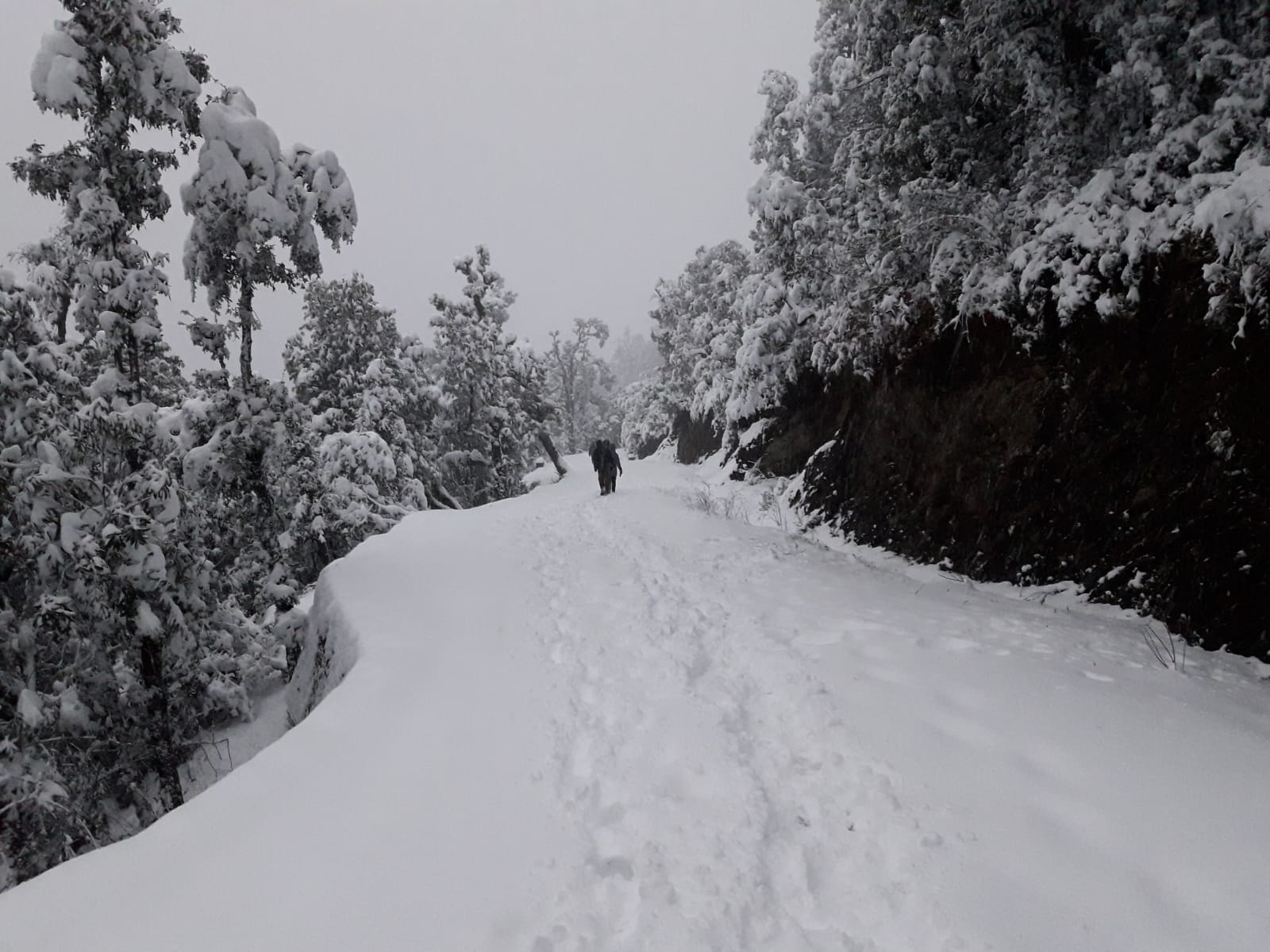
A winter snapshot of the snow-covered Devasthal Observatory campus, taken in December 2022.
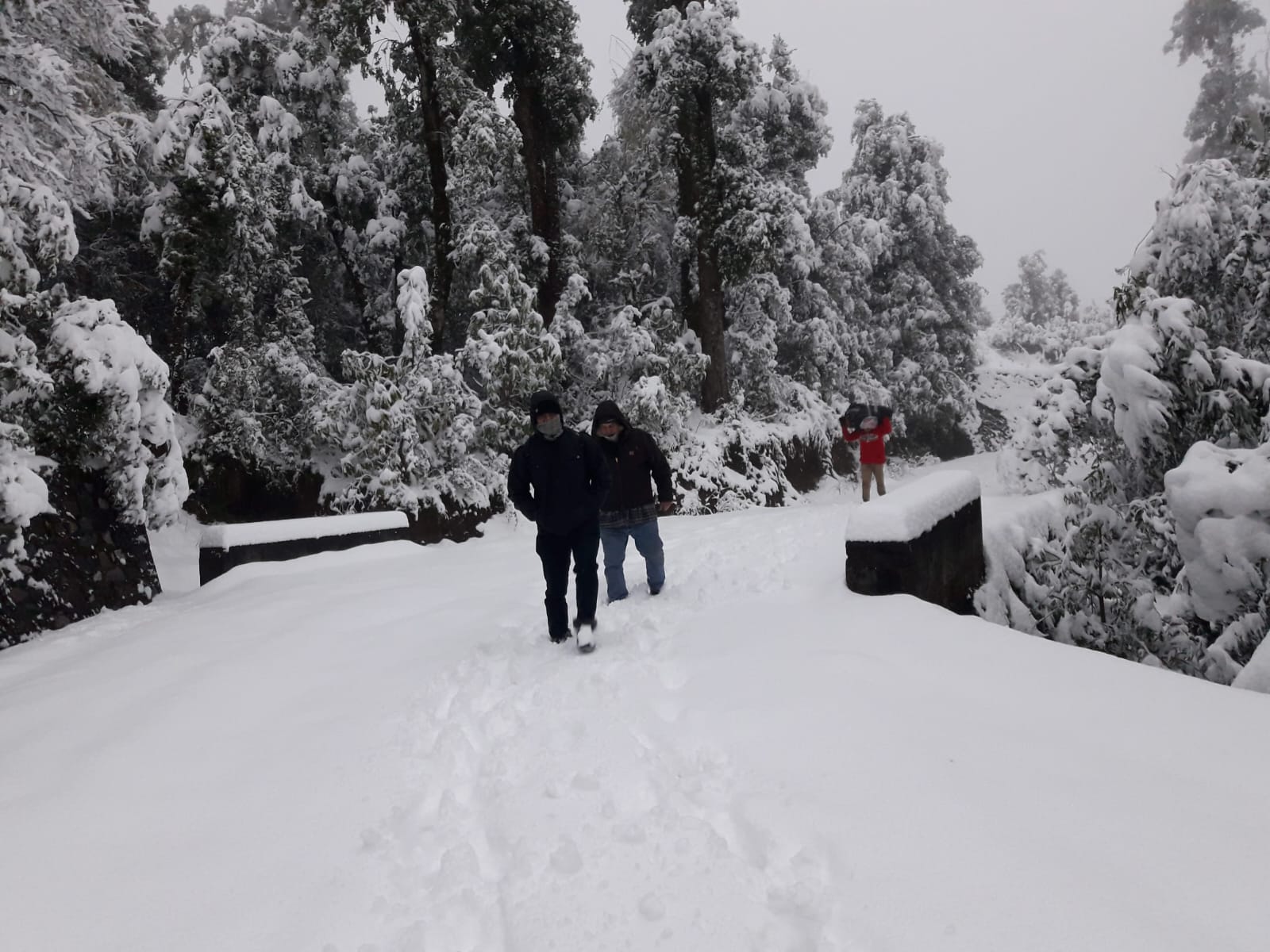
During the intense snowfall of December 2022, observatory staff trek from the base camp to the telescope facility.
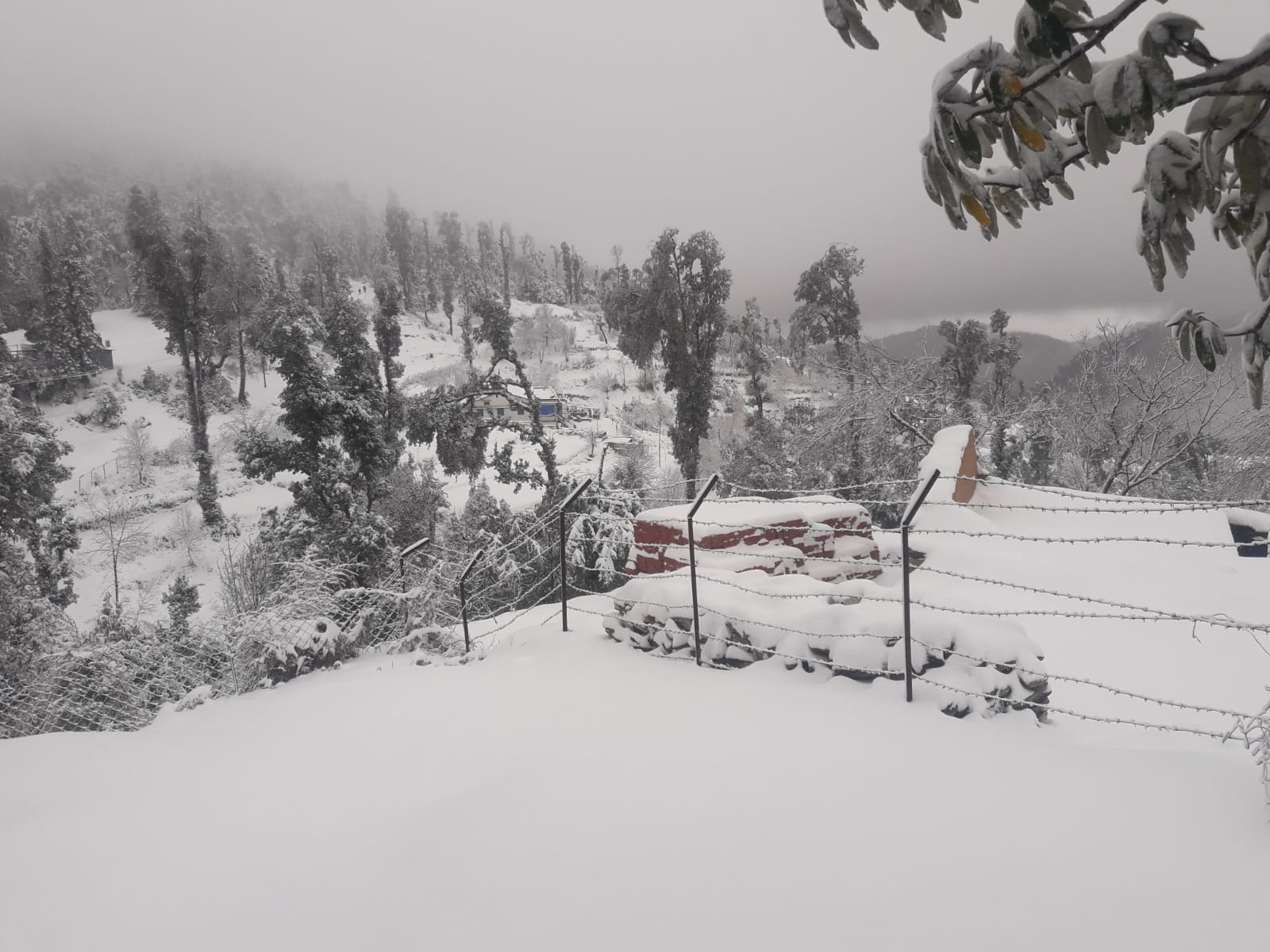
The 2022 snowfall captured from the vantage point of the Devasthal guest house.
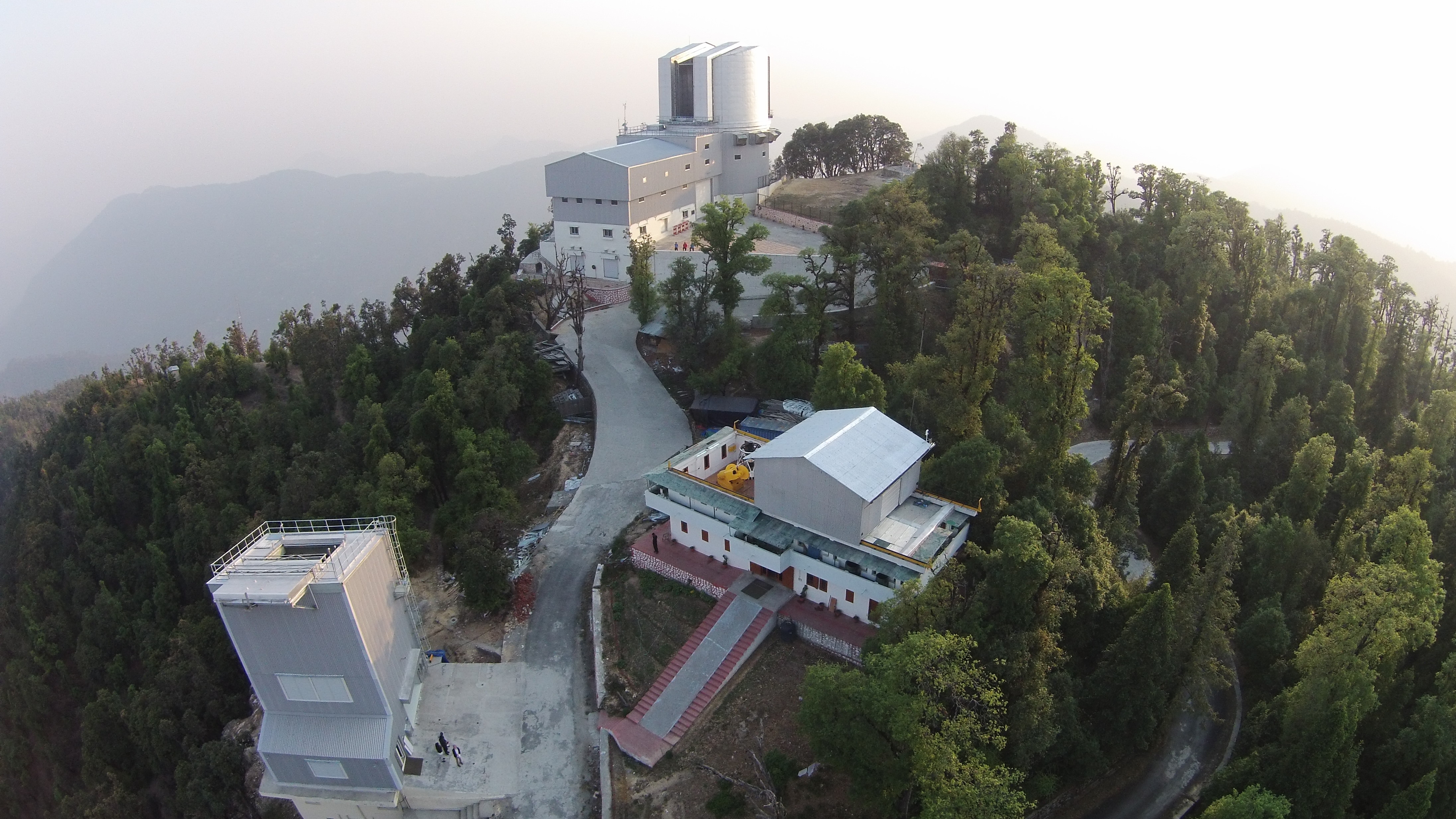
A drone view of the Devasthal mountain summit showcasing three prominent telescopes: the 3.6m Devasthal Optical Telescope (DOT), the 1.3m Devasthal Fast Optical Telescope (DFOT), and the 4m International Liquid Mirror Telescope (ILMT).
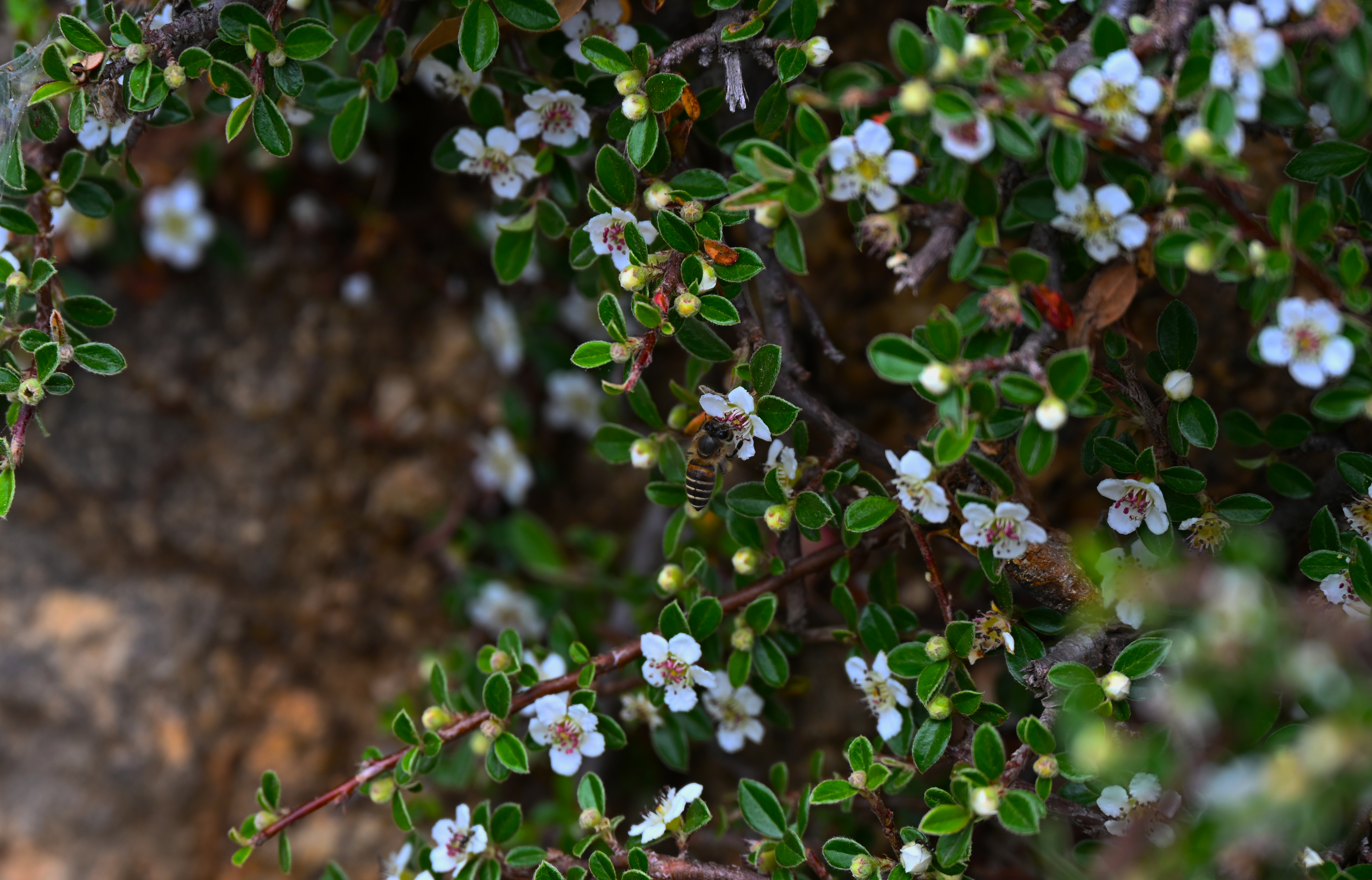
The spring captured in frame (Credit: Nitin Rawat)
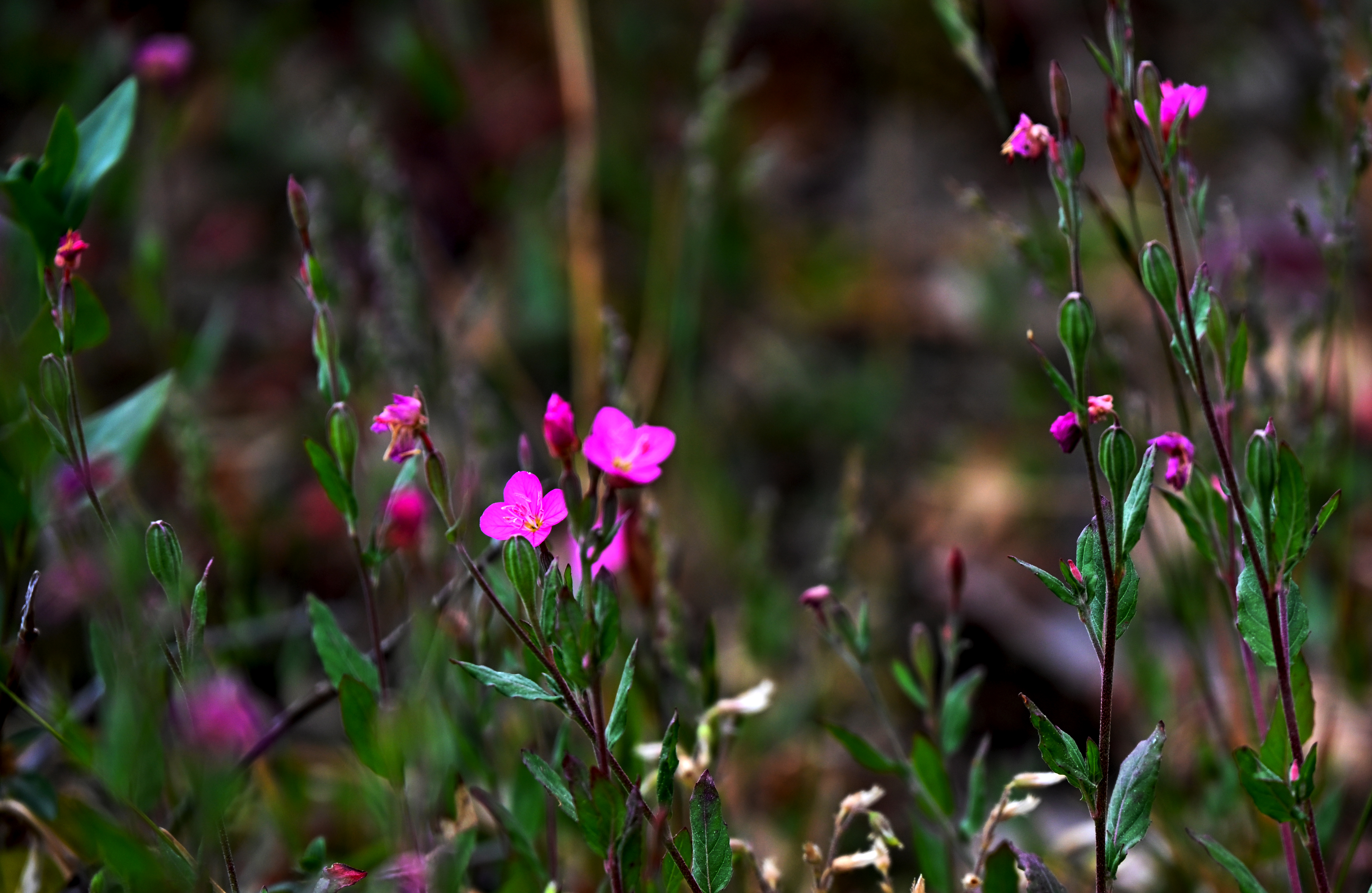
Wild flowers in campus premises. (Credit: Nitin Rawat).

Spring at Devasthal(Credit: Nitin Rawat).
Golden rays of sunrise breaking over Devasthal (Credit: Sarath Prabhav).
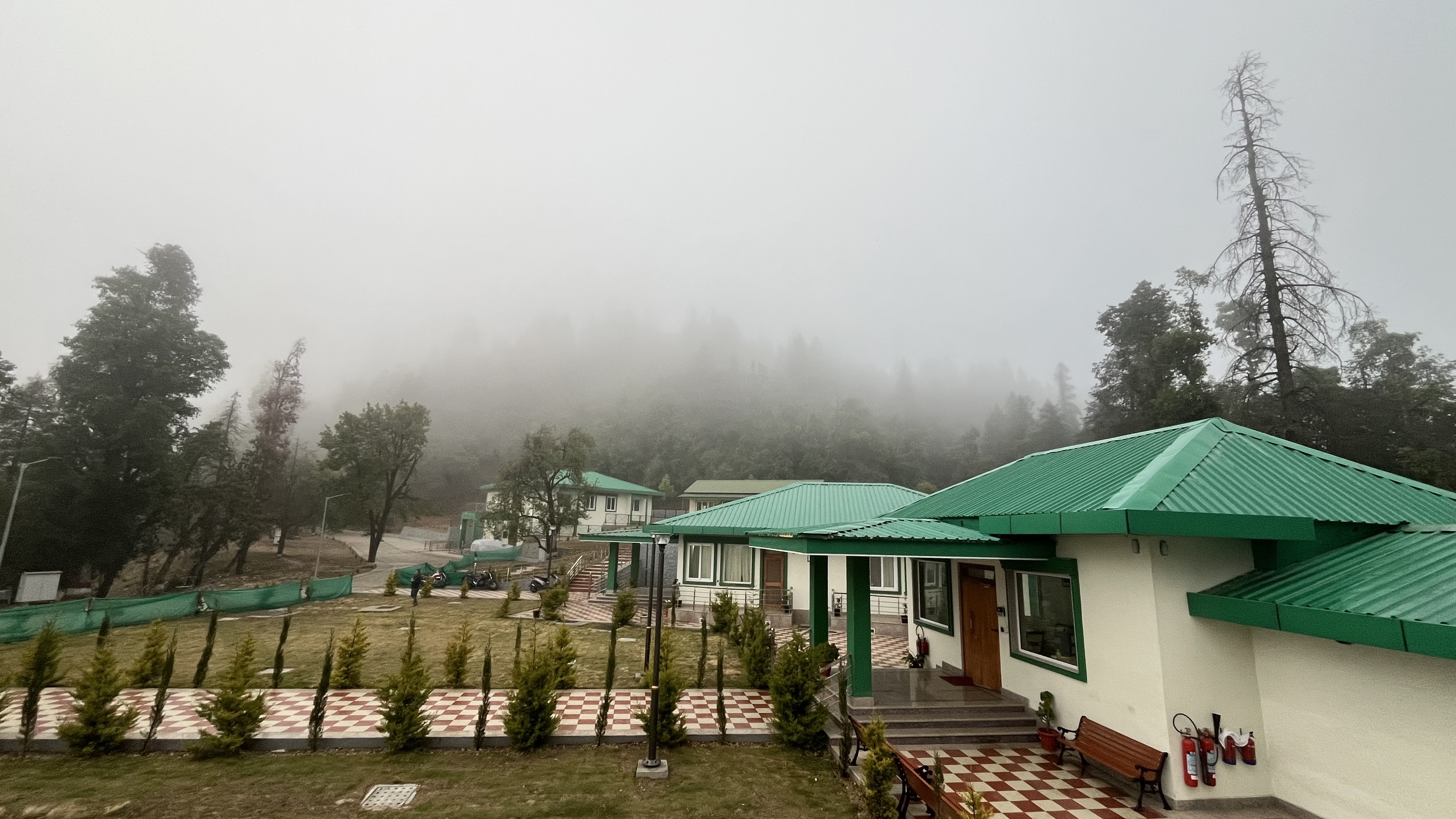
The Devasthal observatory campus obscured by fog (Credit: Prakash Dhami).
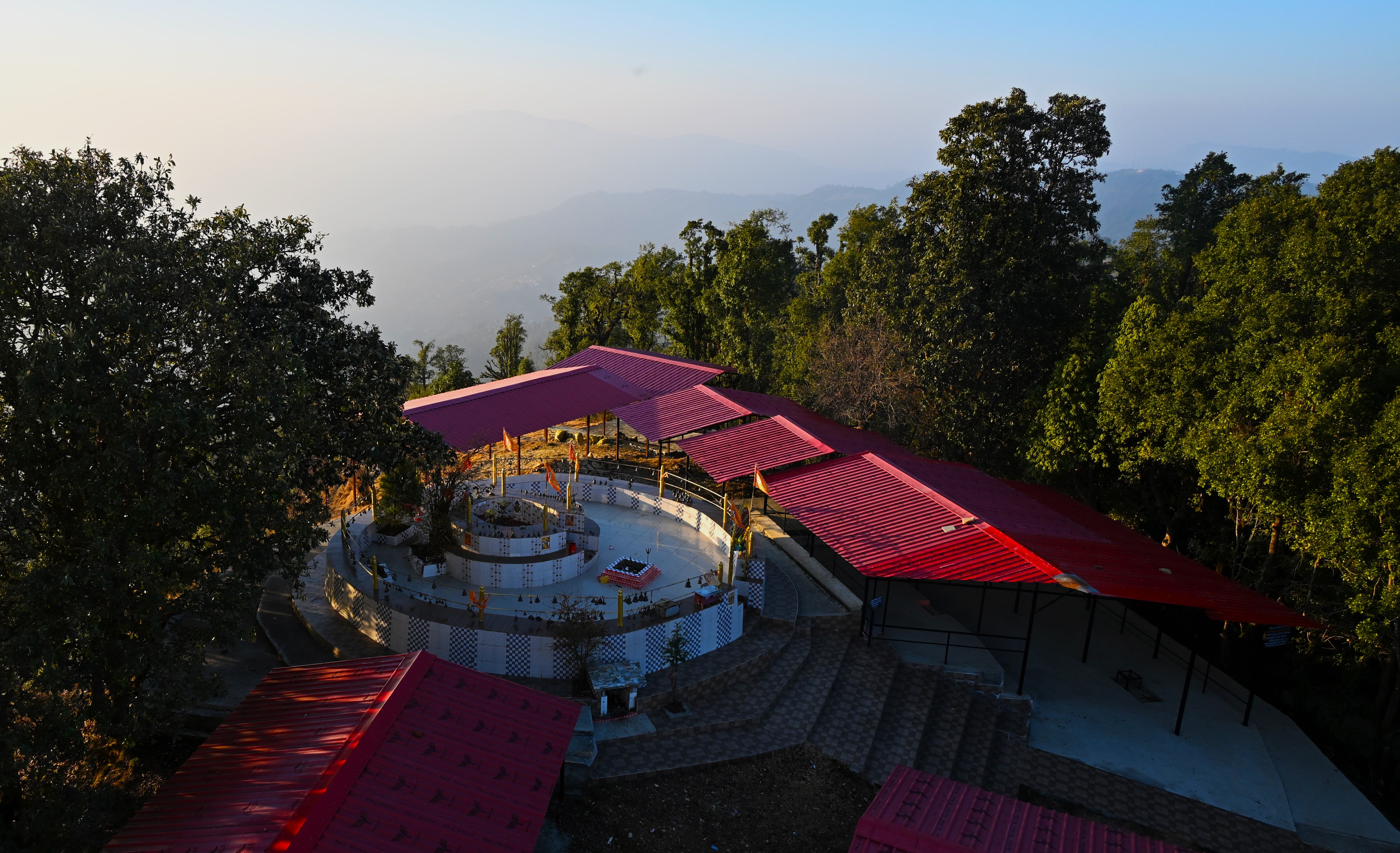
The Devasthal temple located near DOT, after which the telescope is named (Credit: Nitin Rawat).
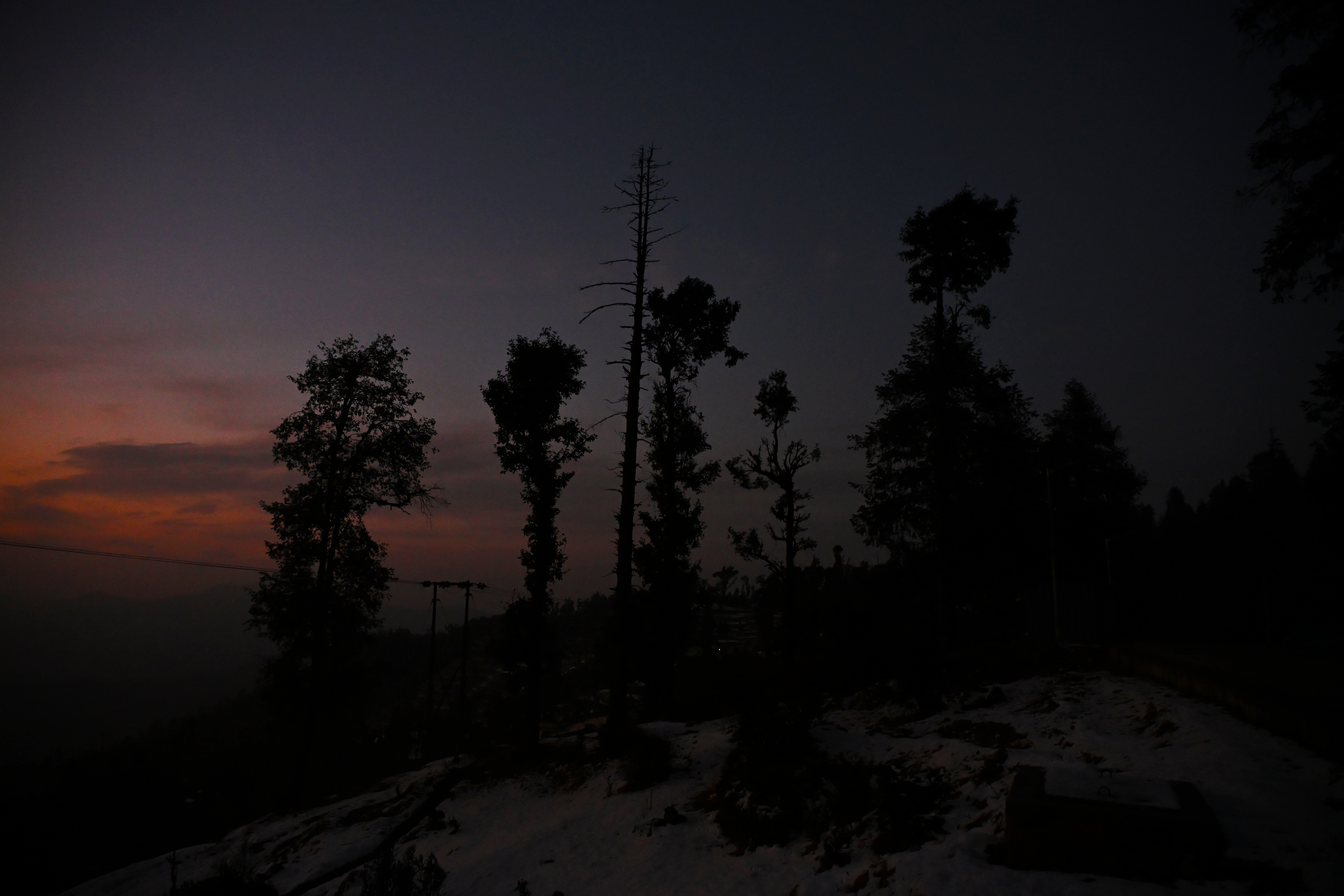
The last sun rays on the campus (Credit: Nitin Rawat).
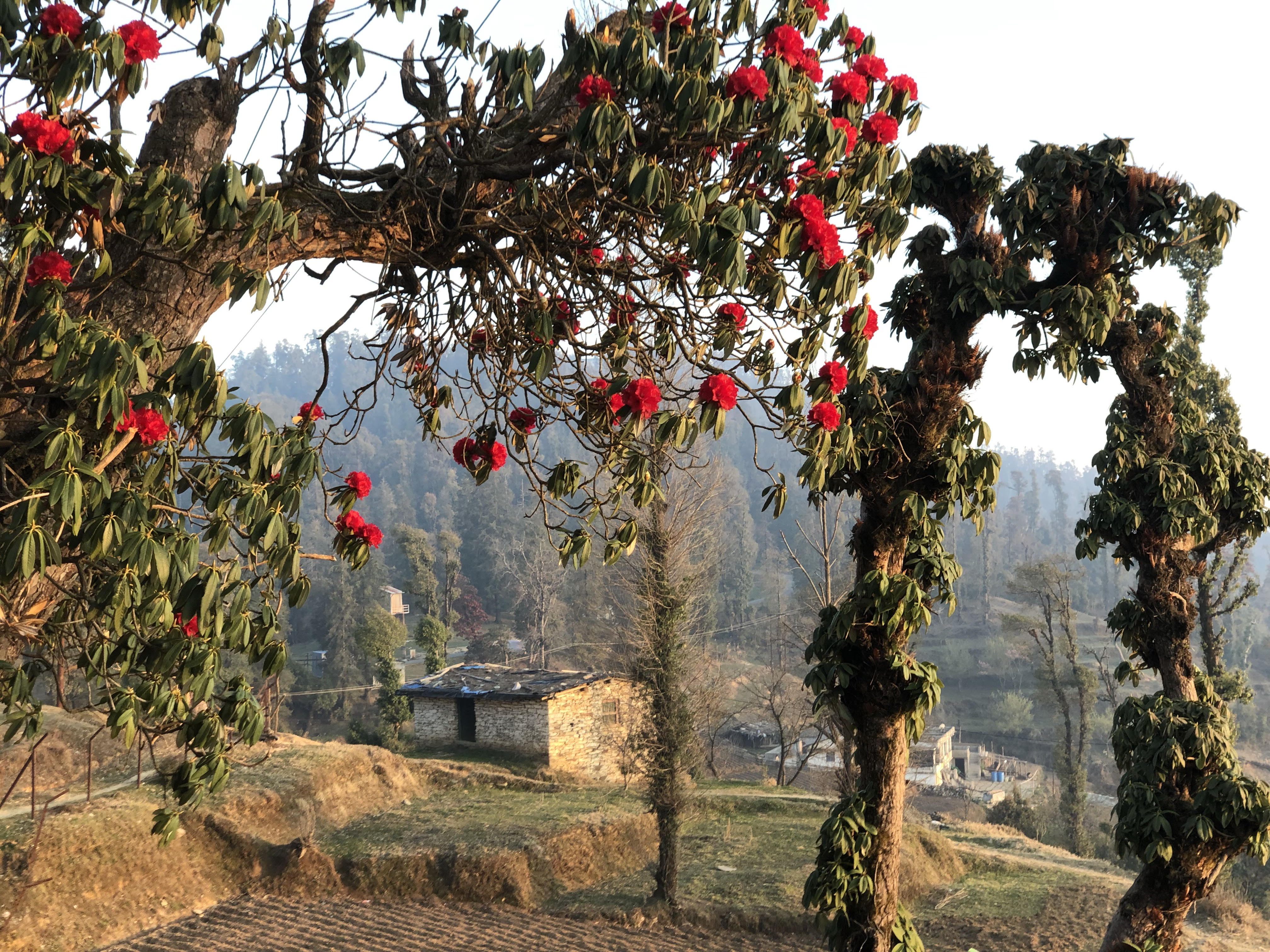
Rhododendrons in full bloom during spring at Devasthal (Credit: Dr. saurabh).
A pair of blue winged Minla resting on a tree of Devasthal campus (Credit: Nitin Rawat).
A Verditer Flycatcher captured at Devasthal campus (Credit: Nitin Rawat).
A Gray Winged Blackbird photographed at the Devasthal campus (Credit: Nitin Rawat).
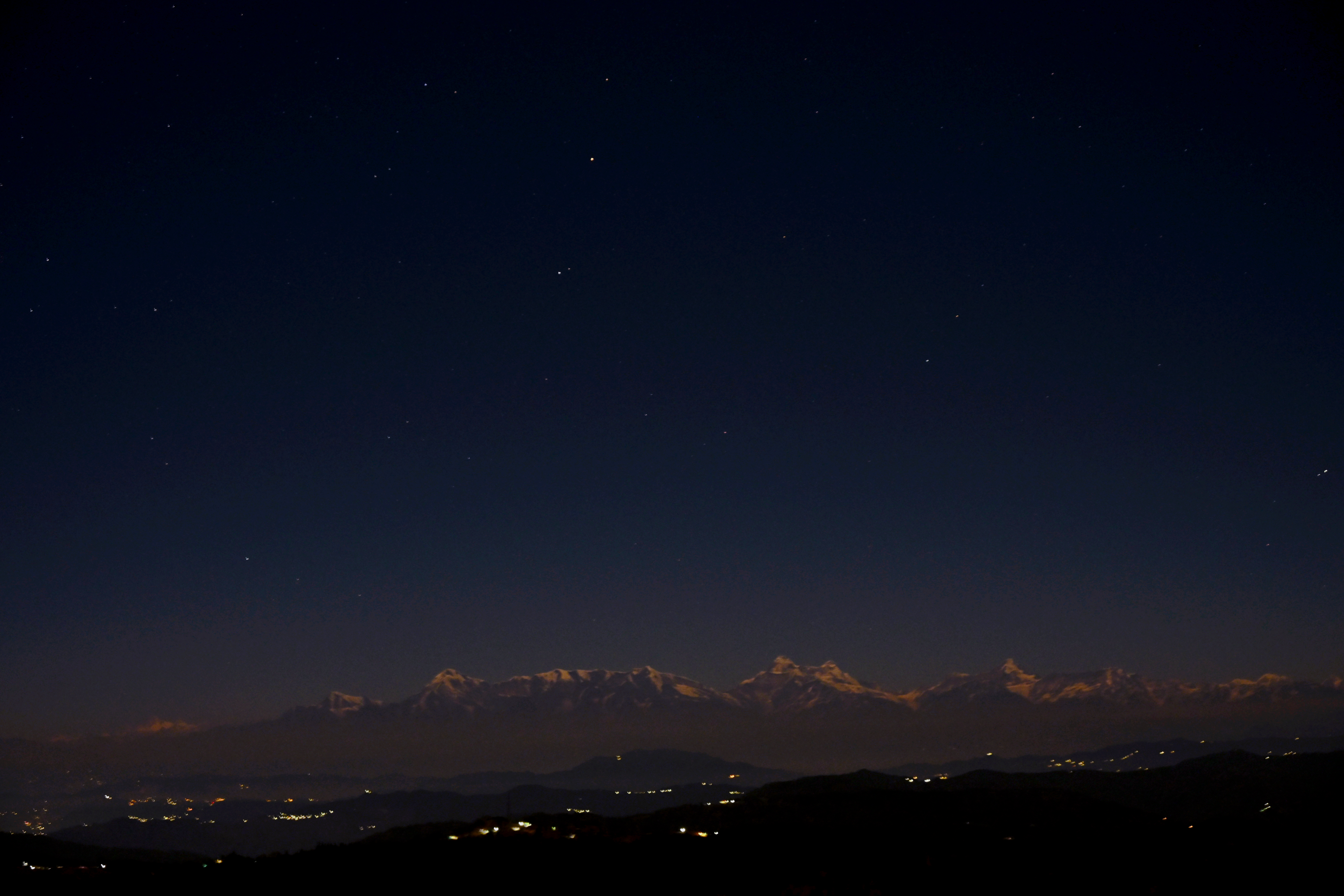
The Himalayan range captured from DOT building during night time (Credit: Nitin Rawat).
The Panchachuli peaks of Himalayan range captured from Devasthal (Credit: Nitin Rawat).
The Himalayan range captured from DOT building (Credit: Nitin Rawat).
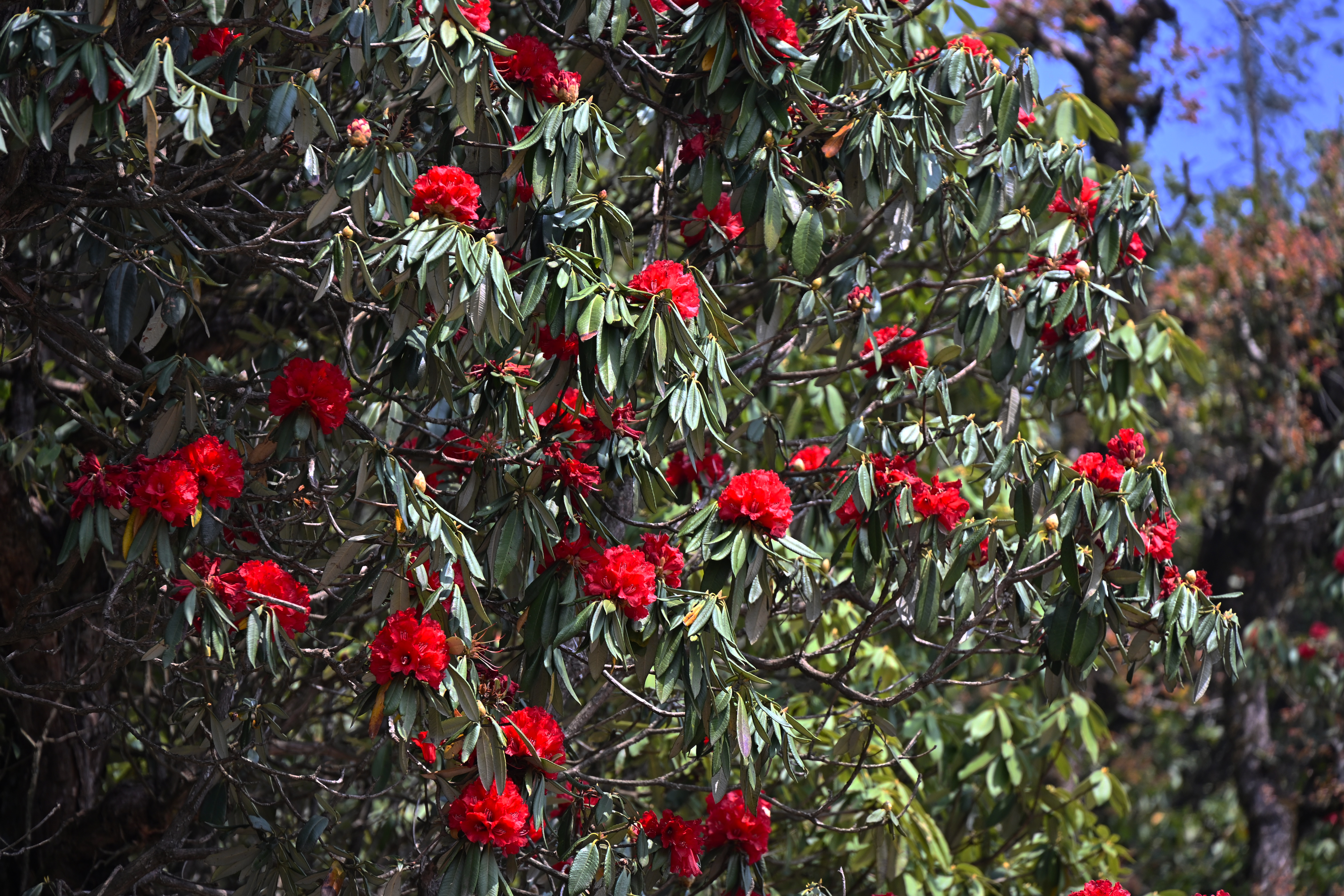
A spring filled by Rhododendrons at Devasthal campus (Credit: Nitin Rawat).